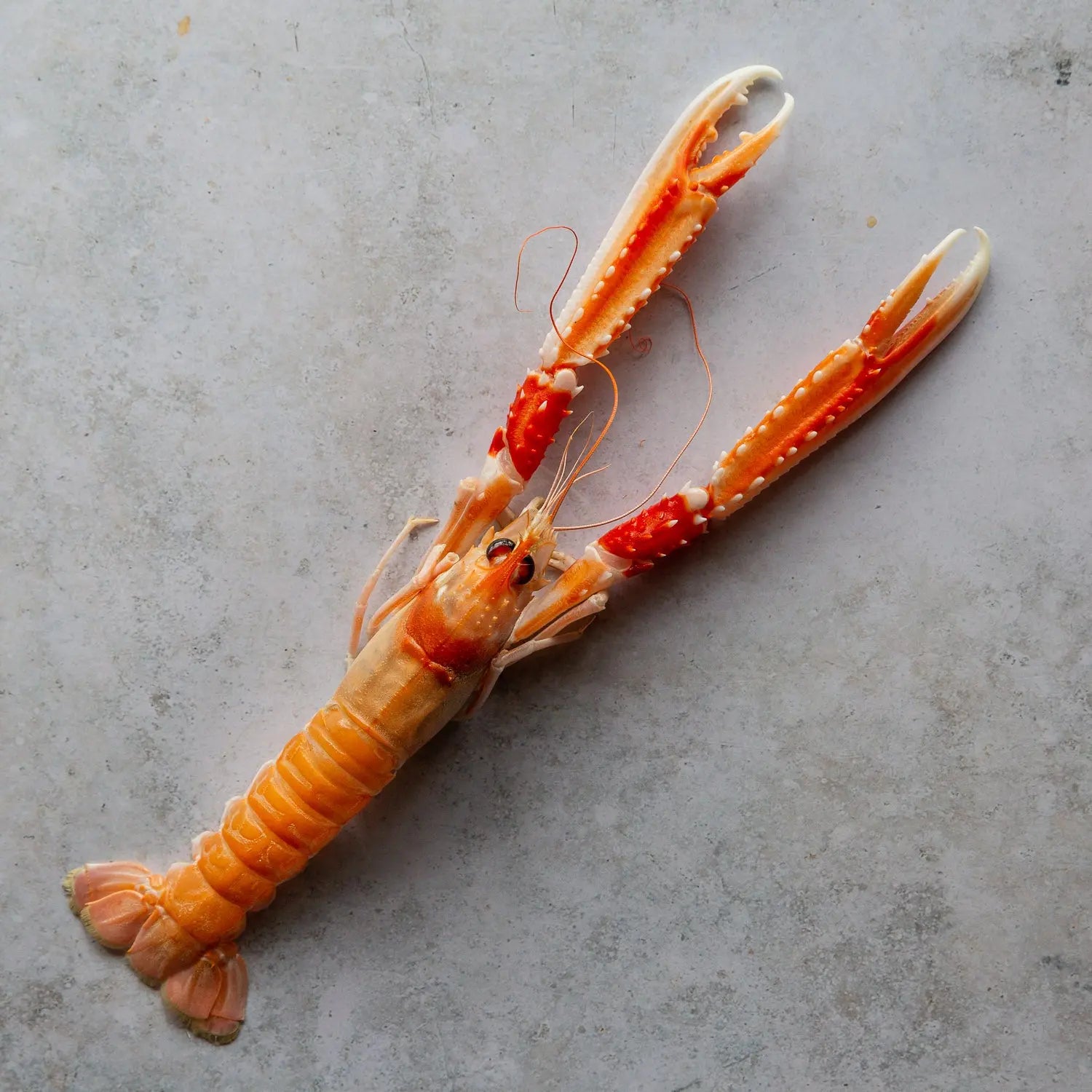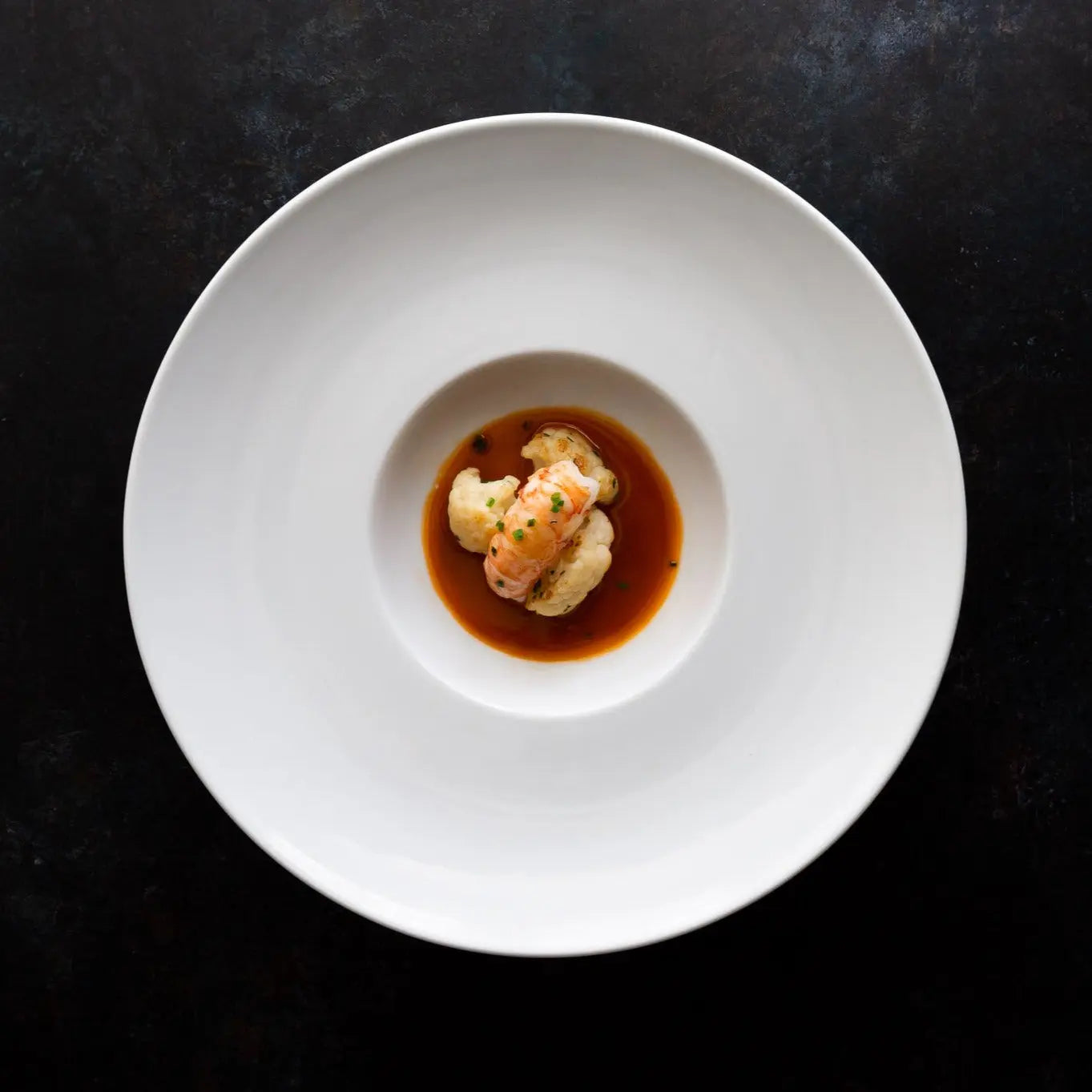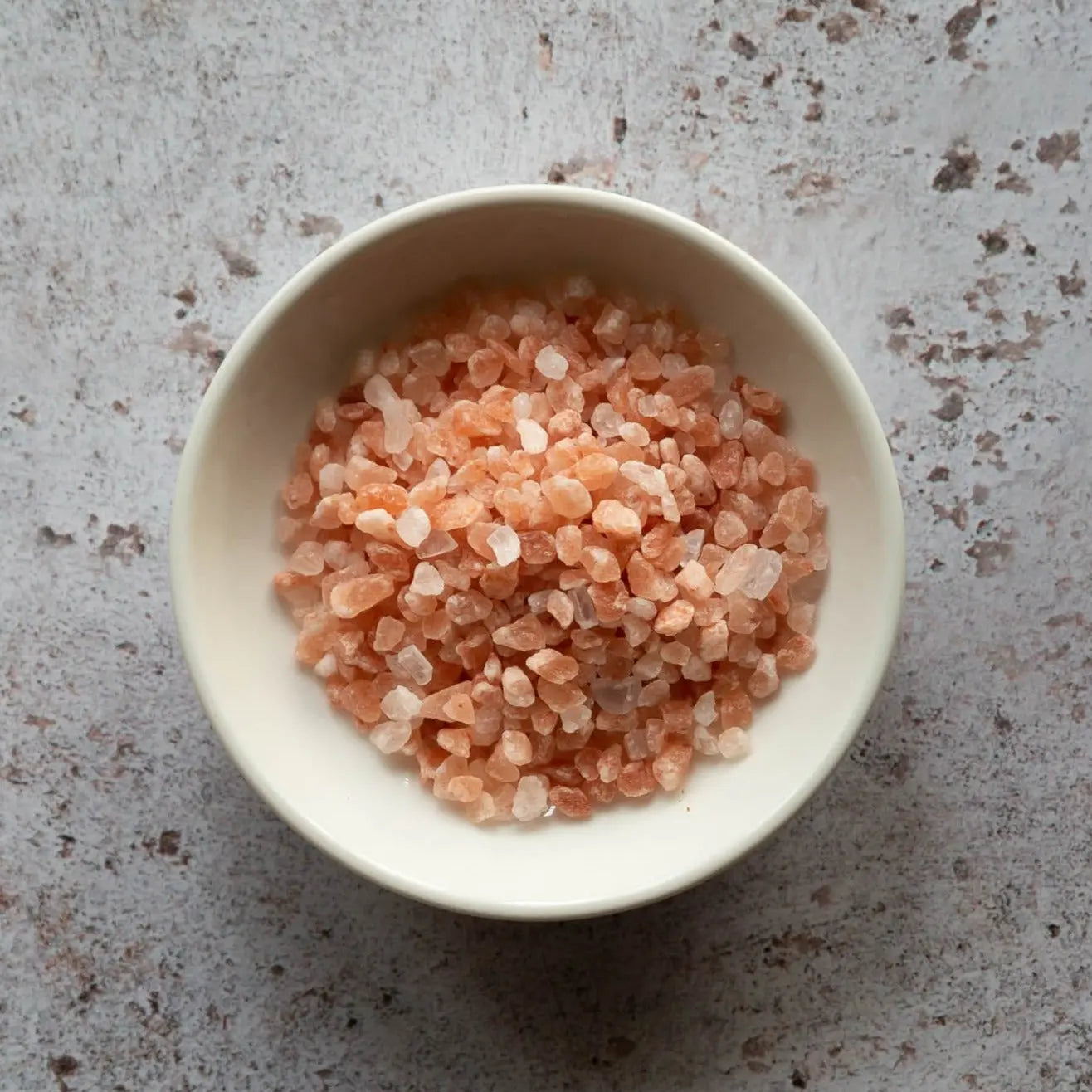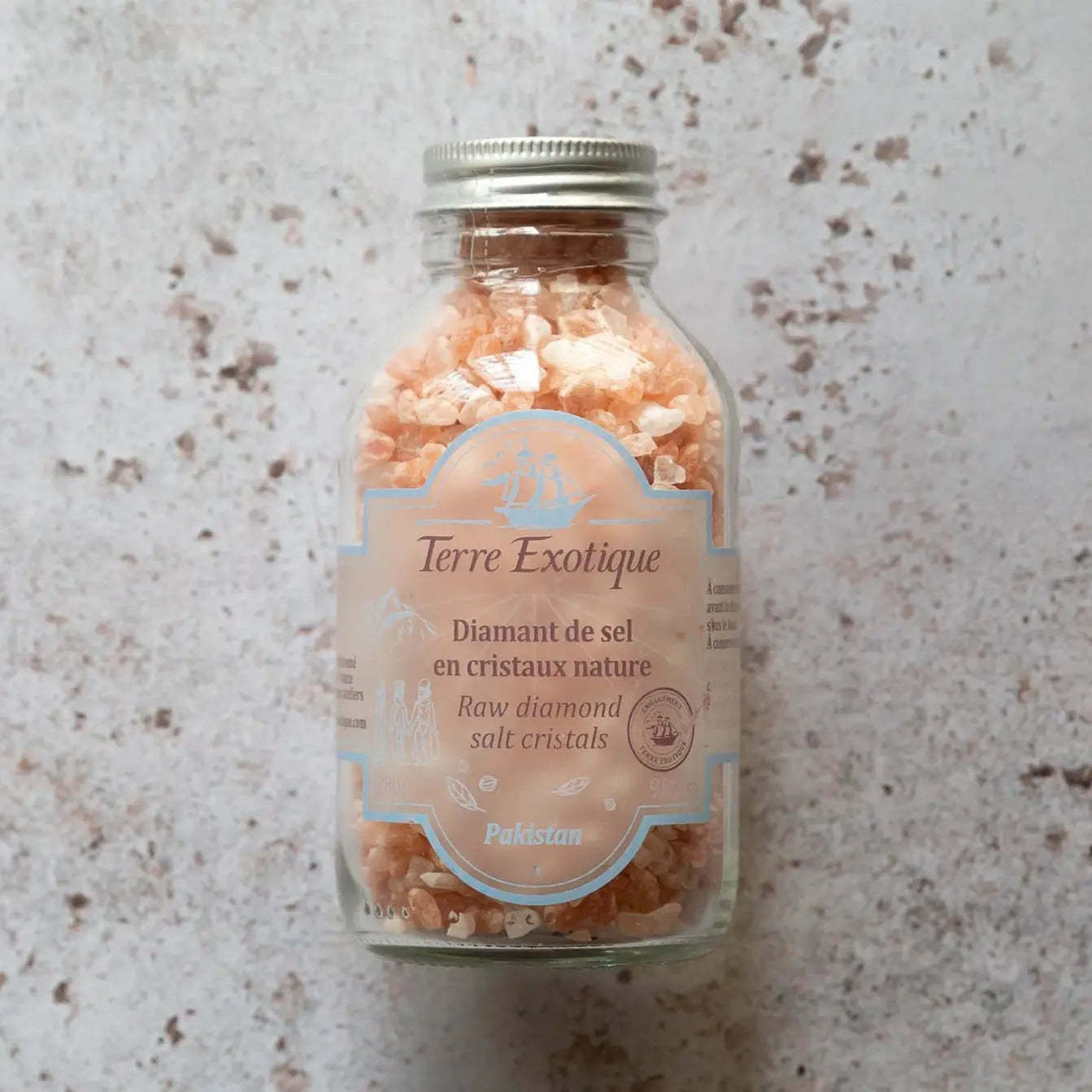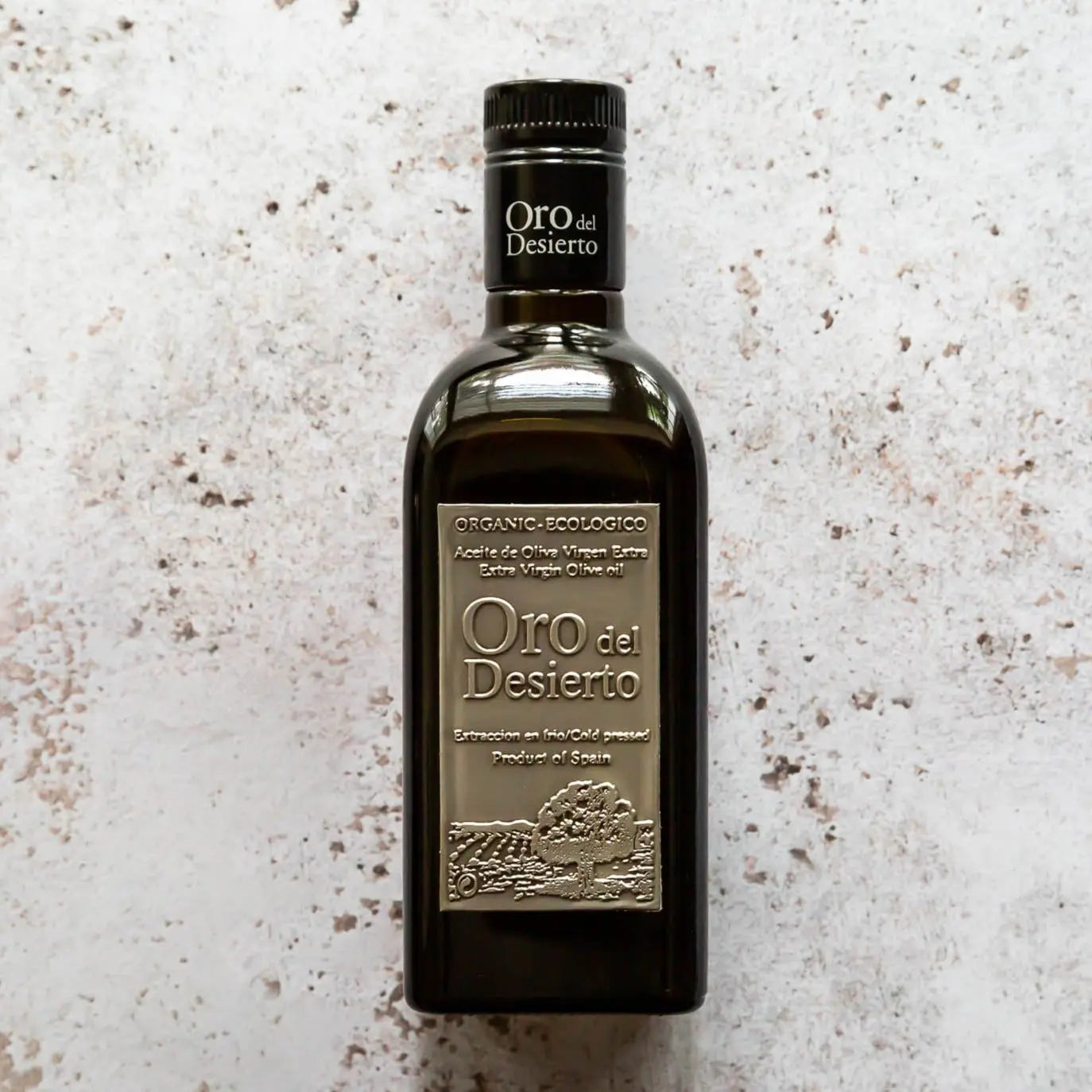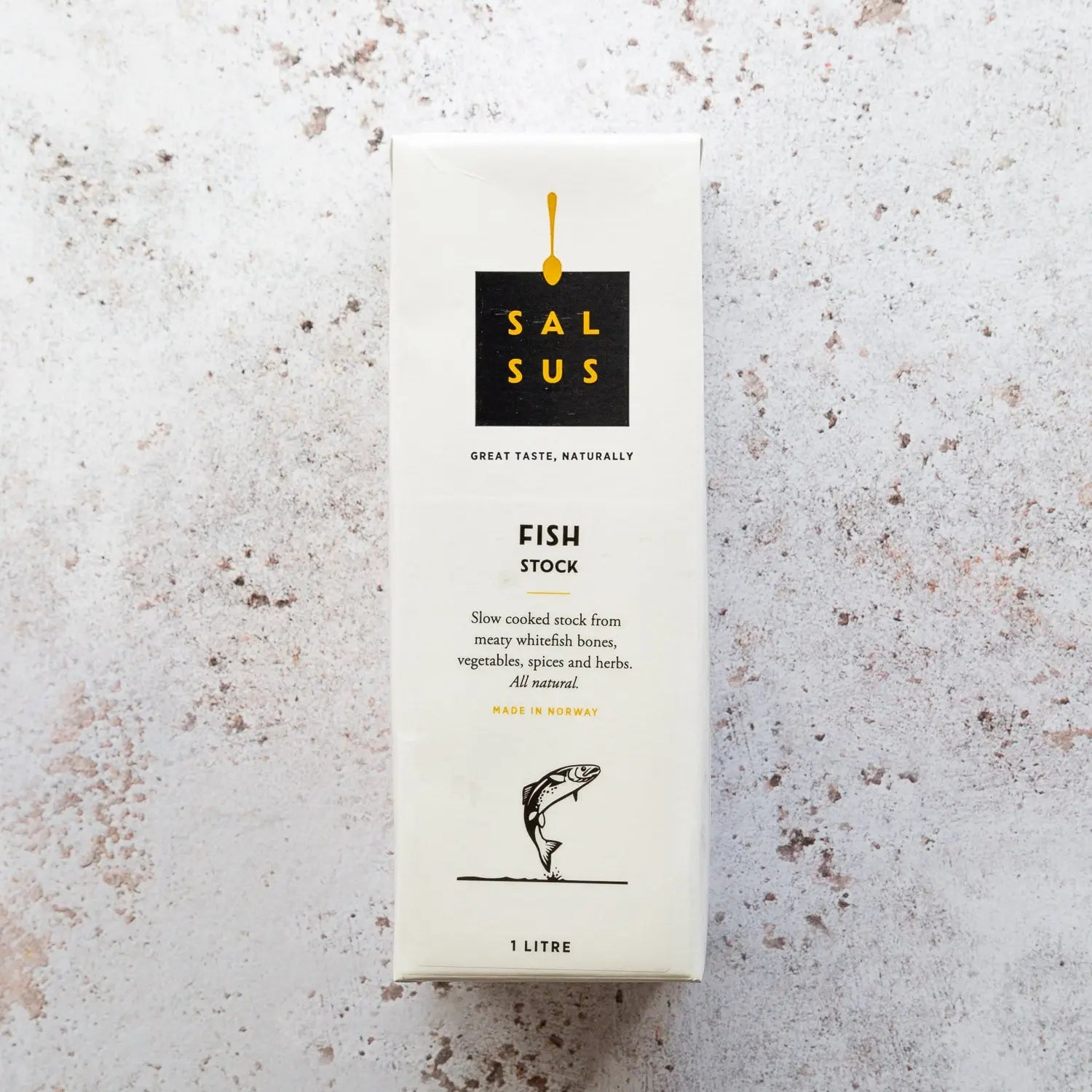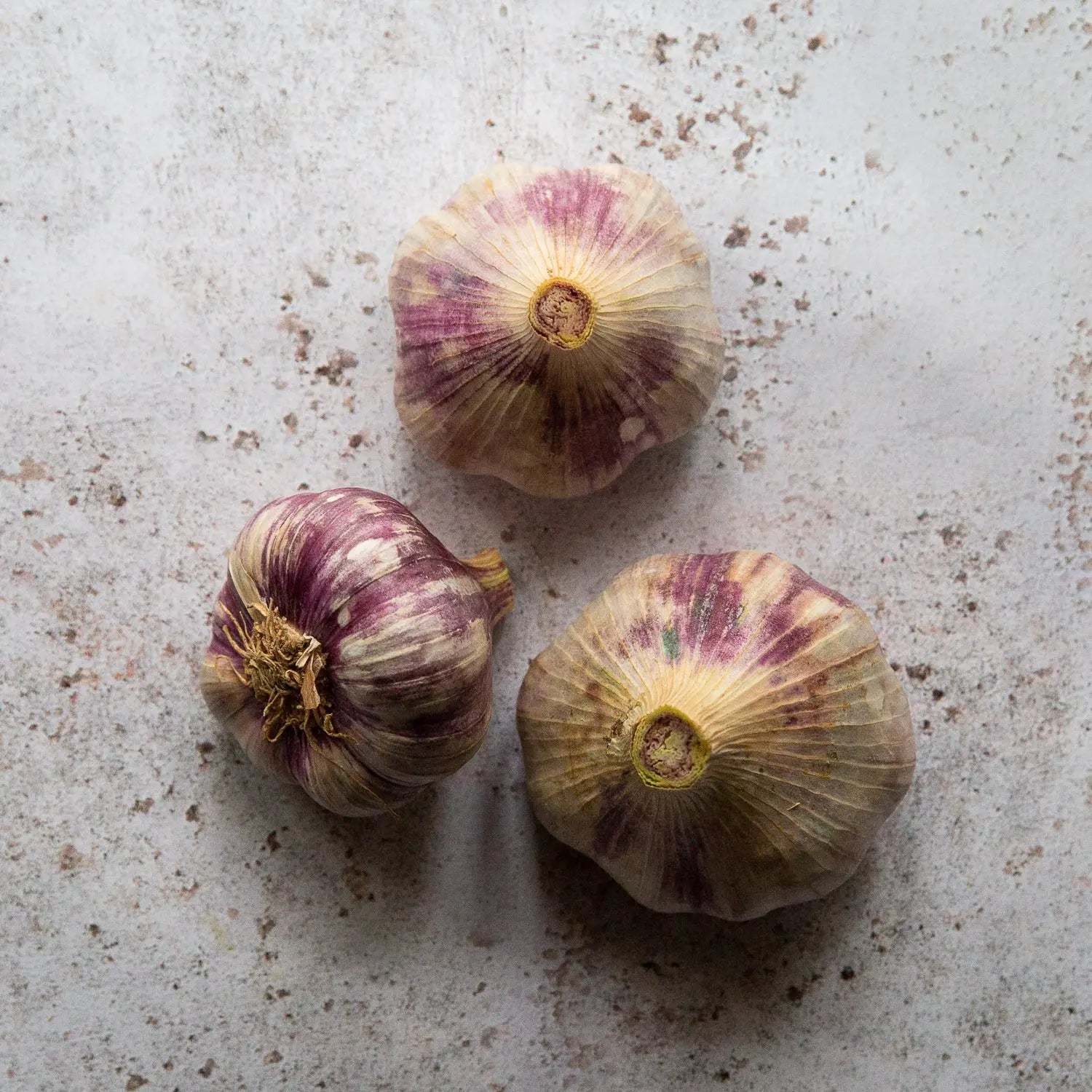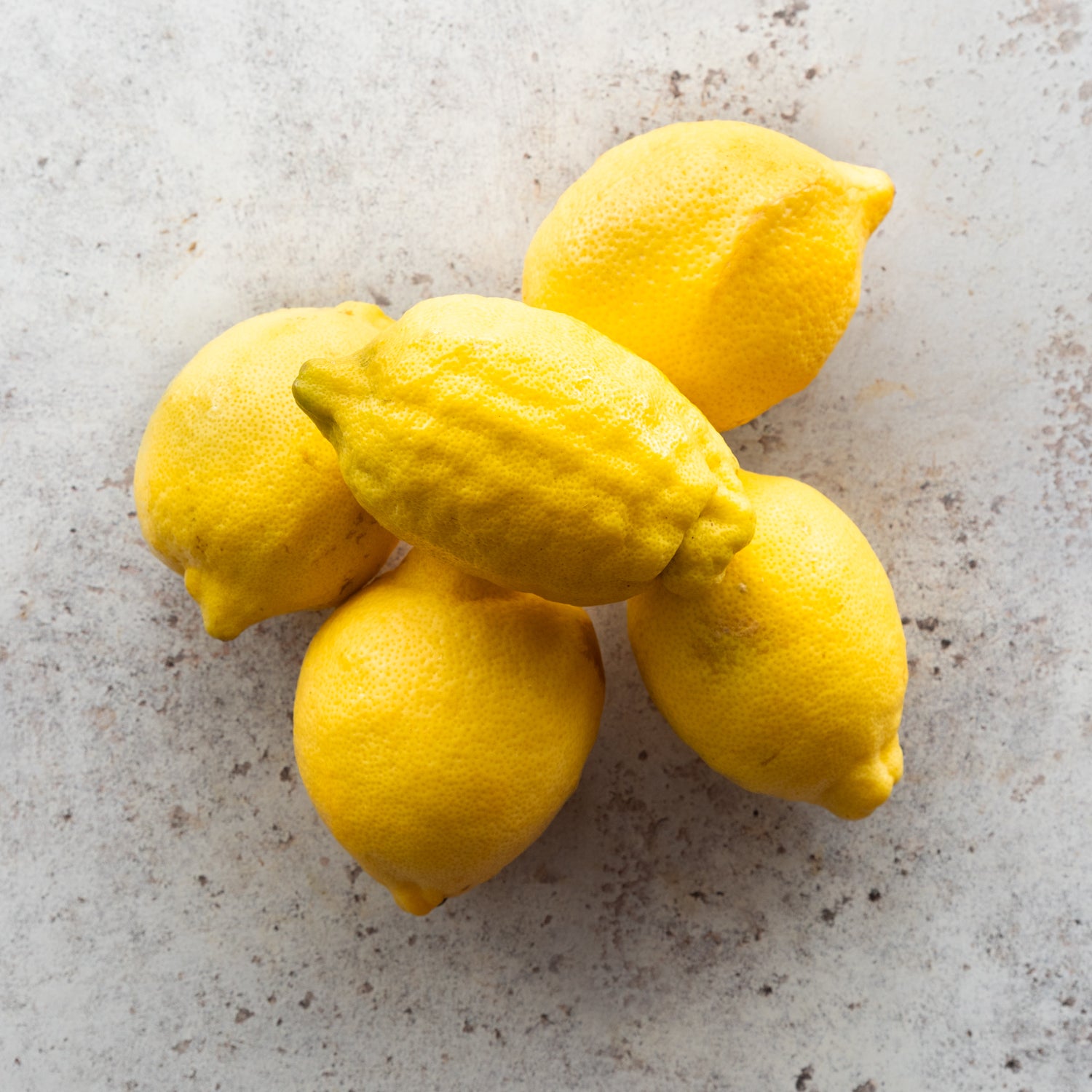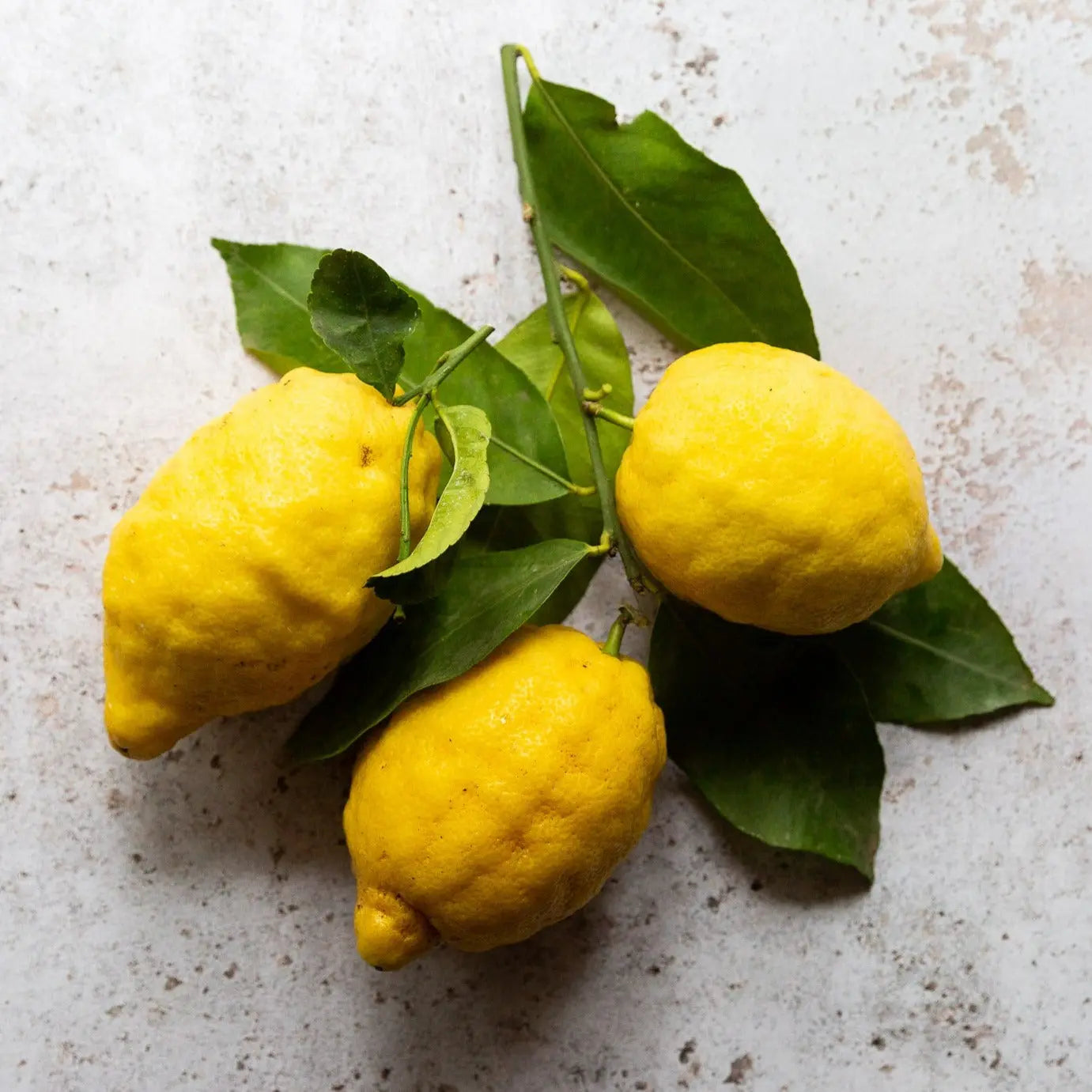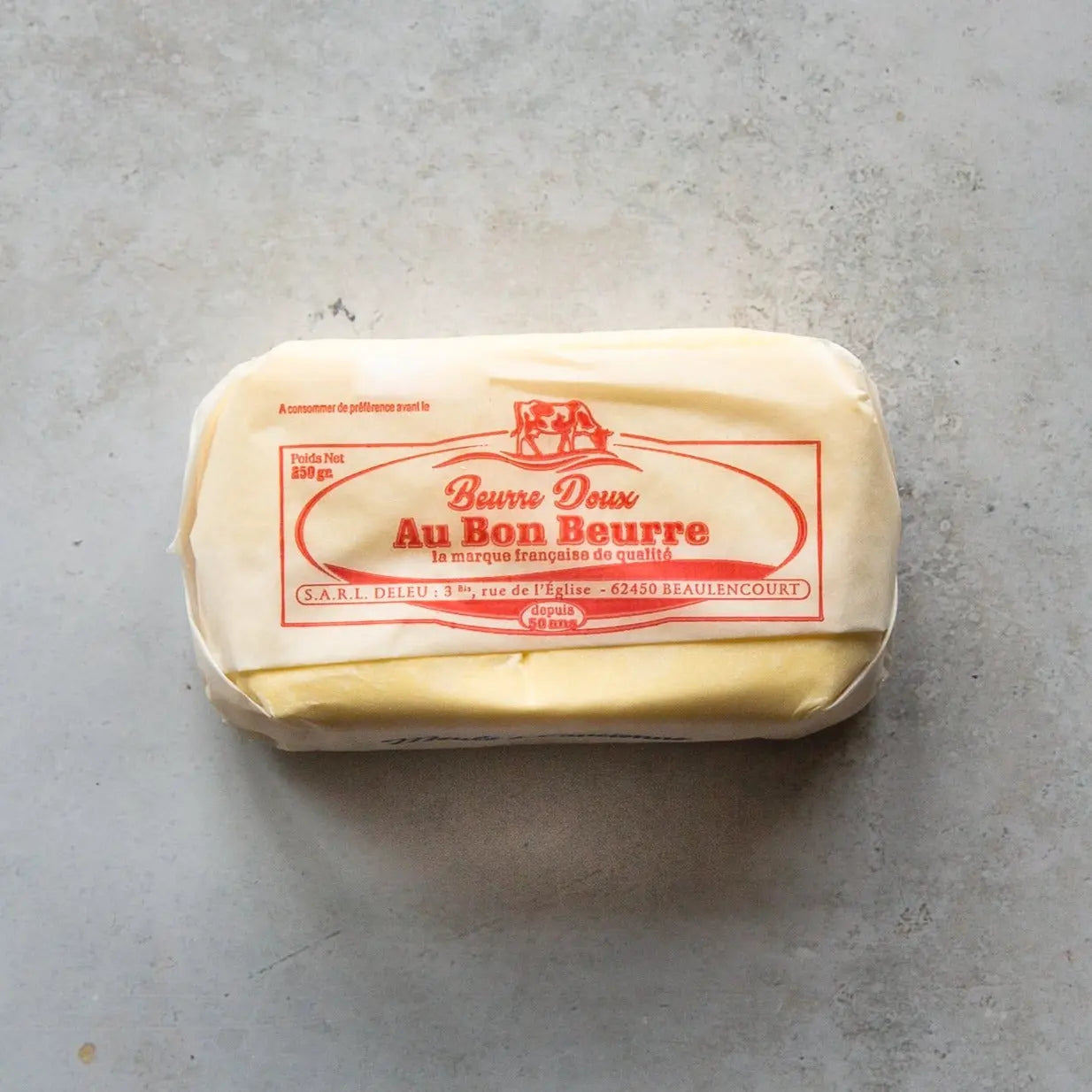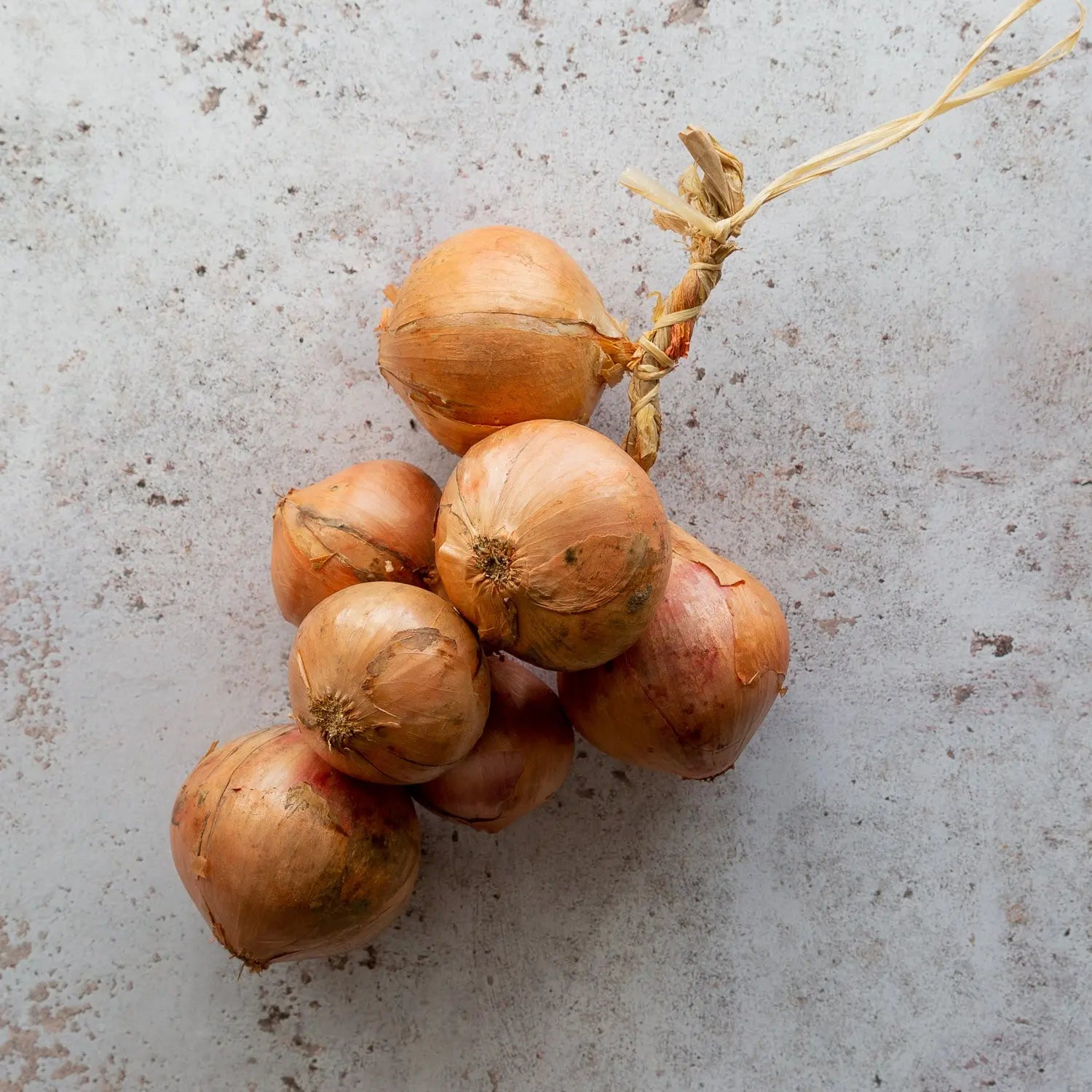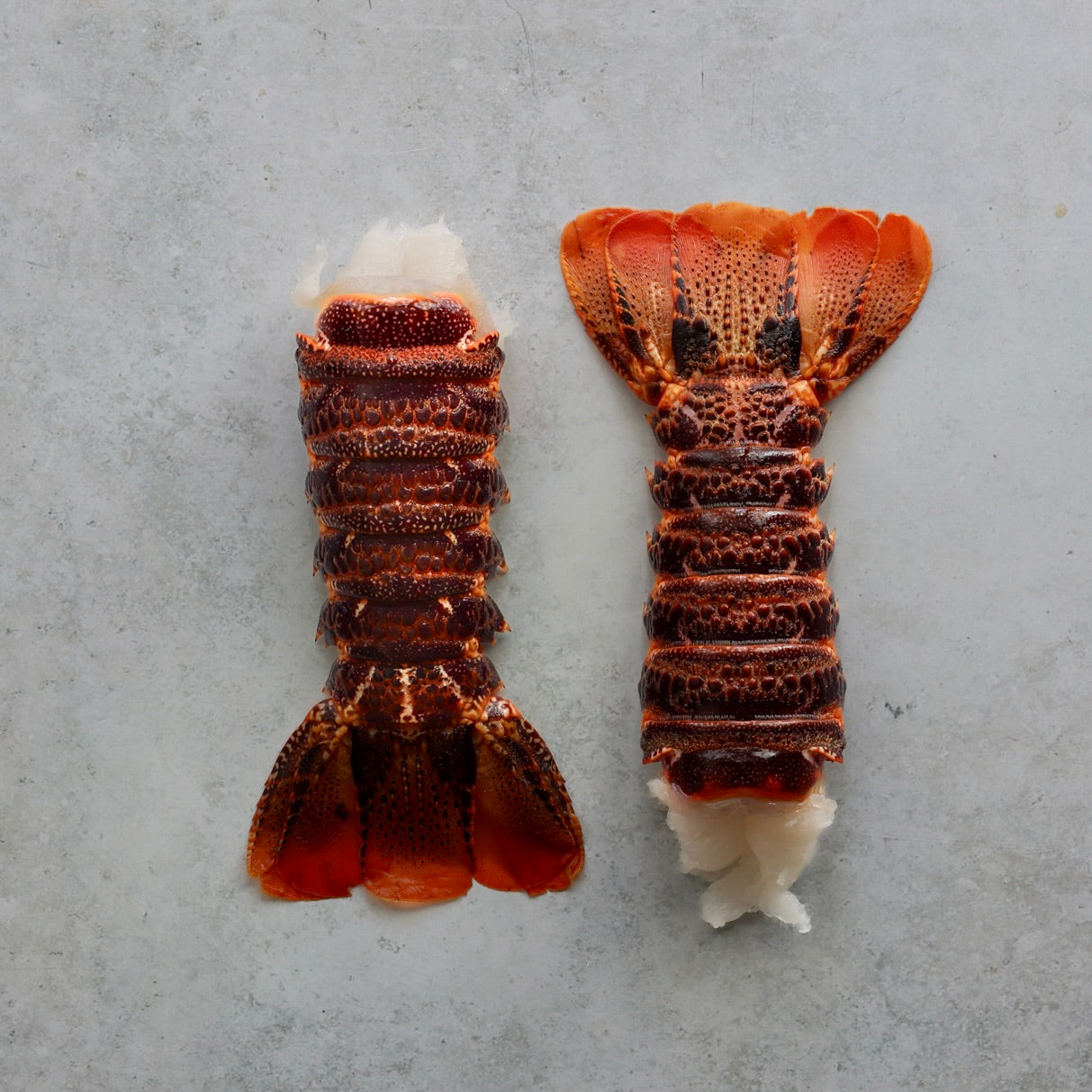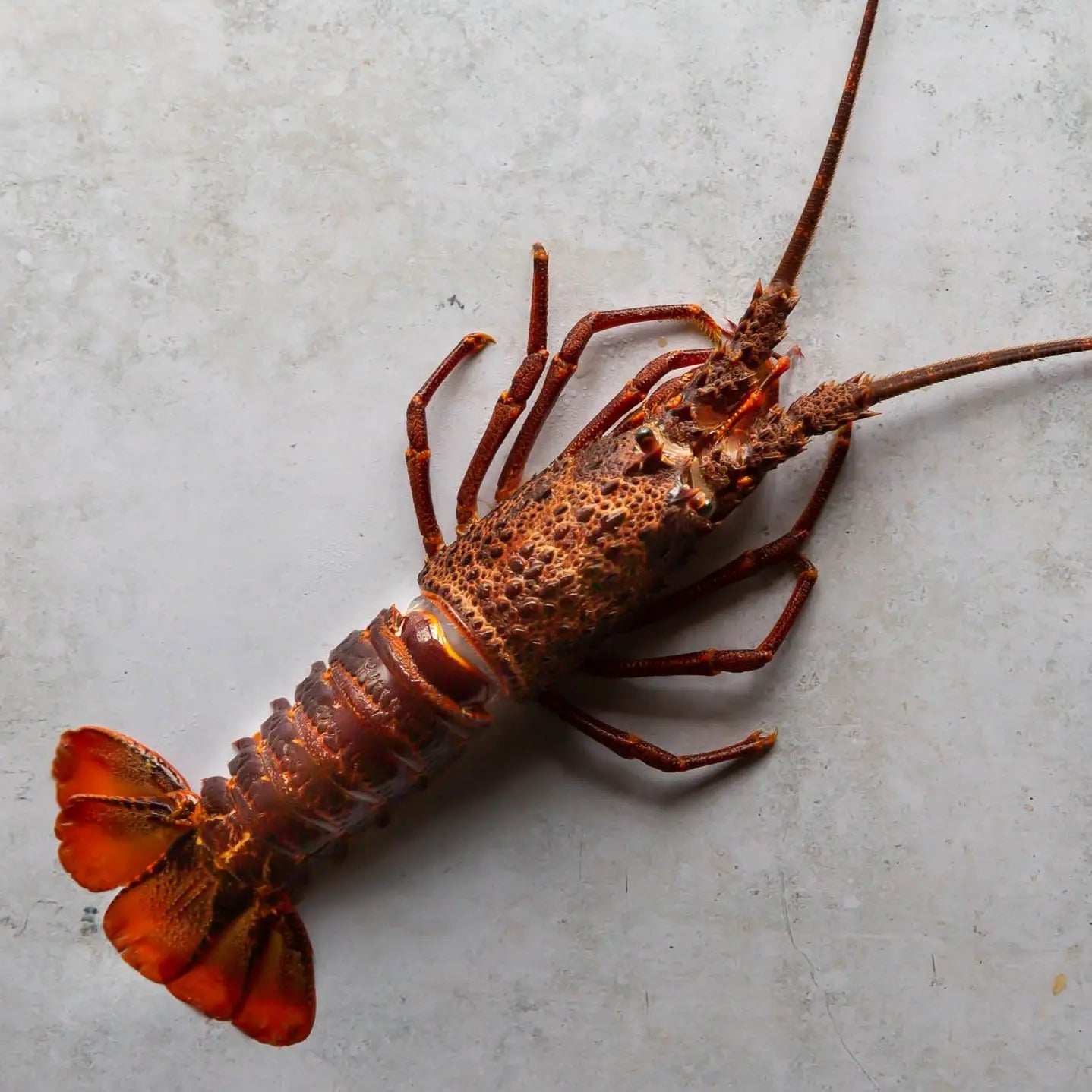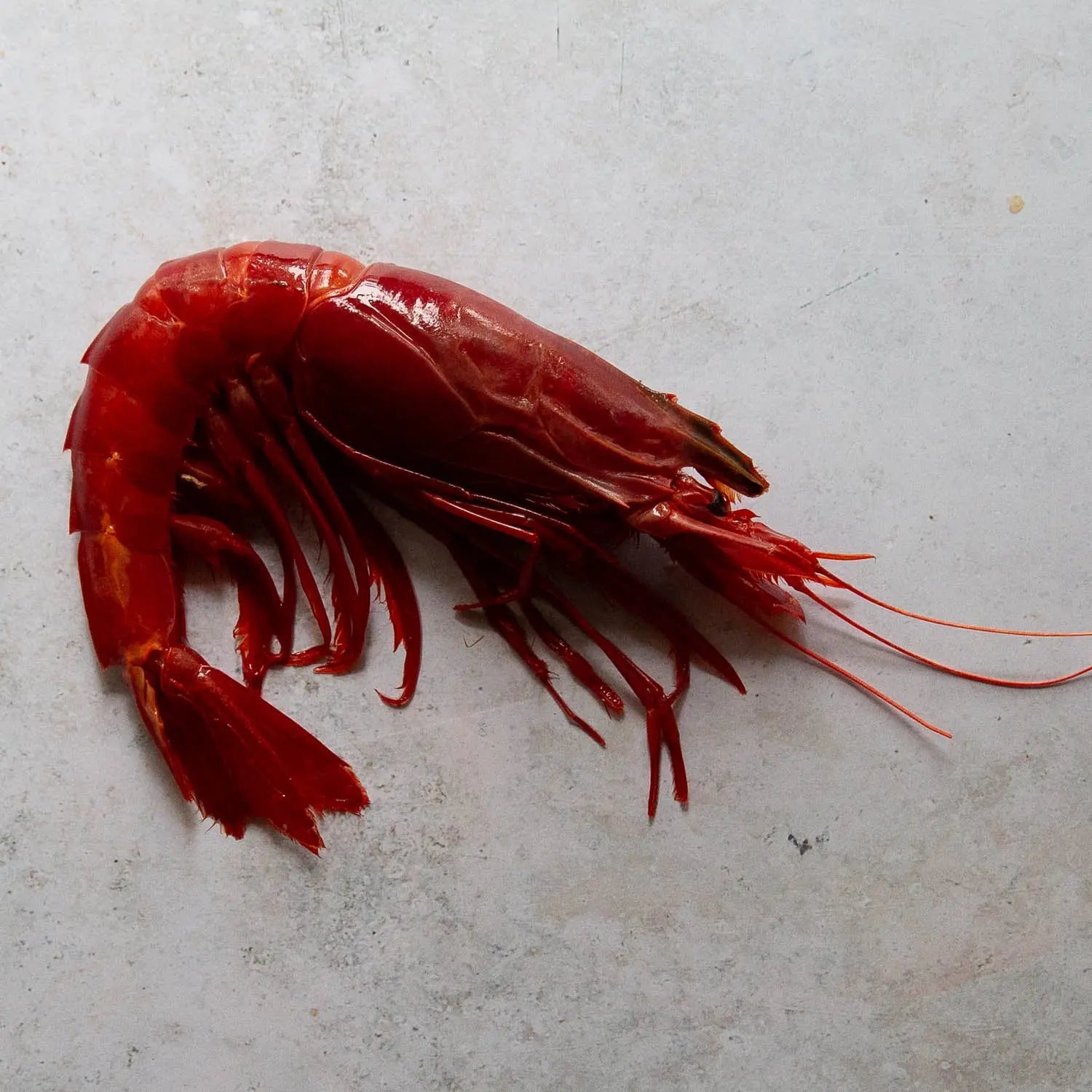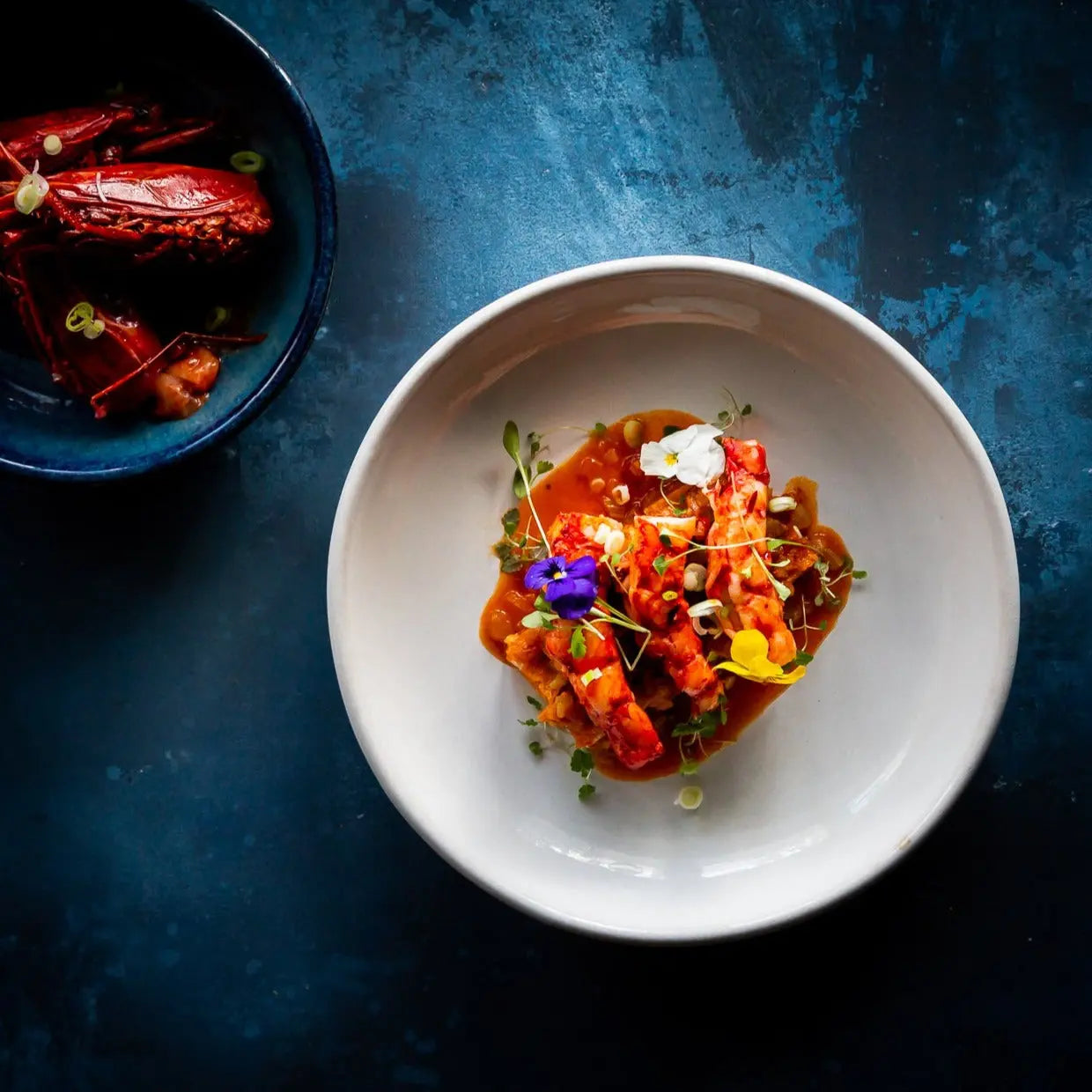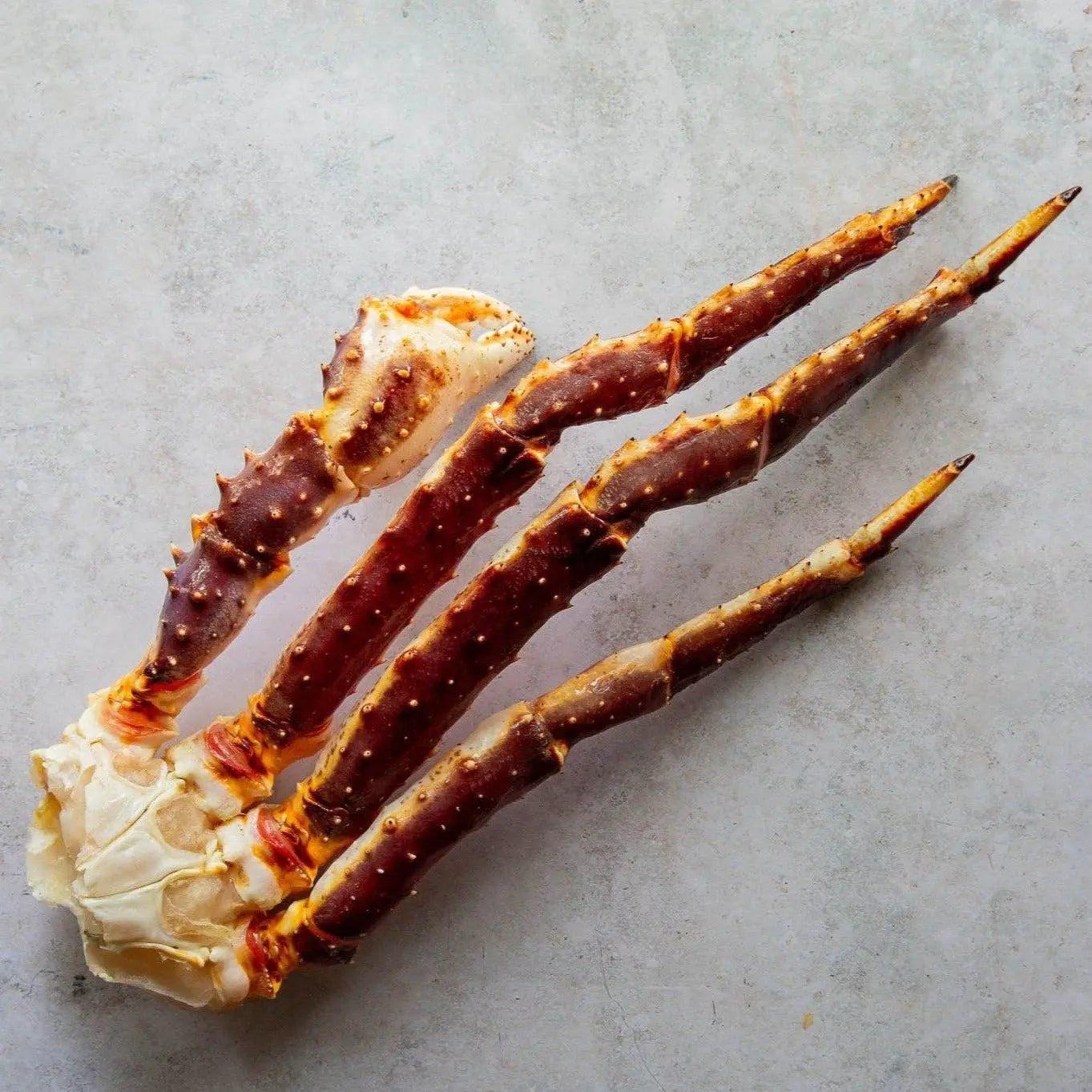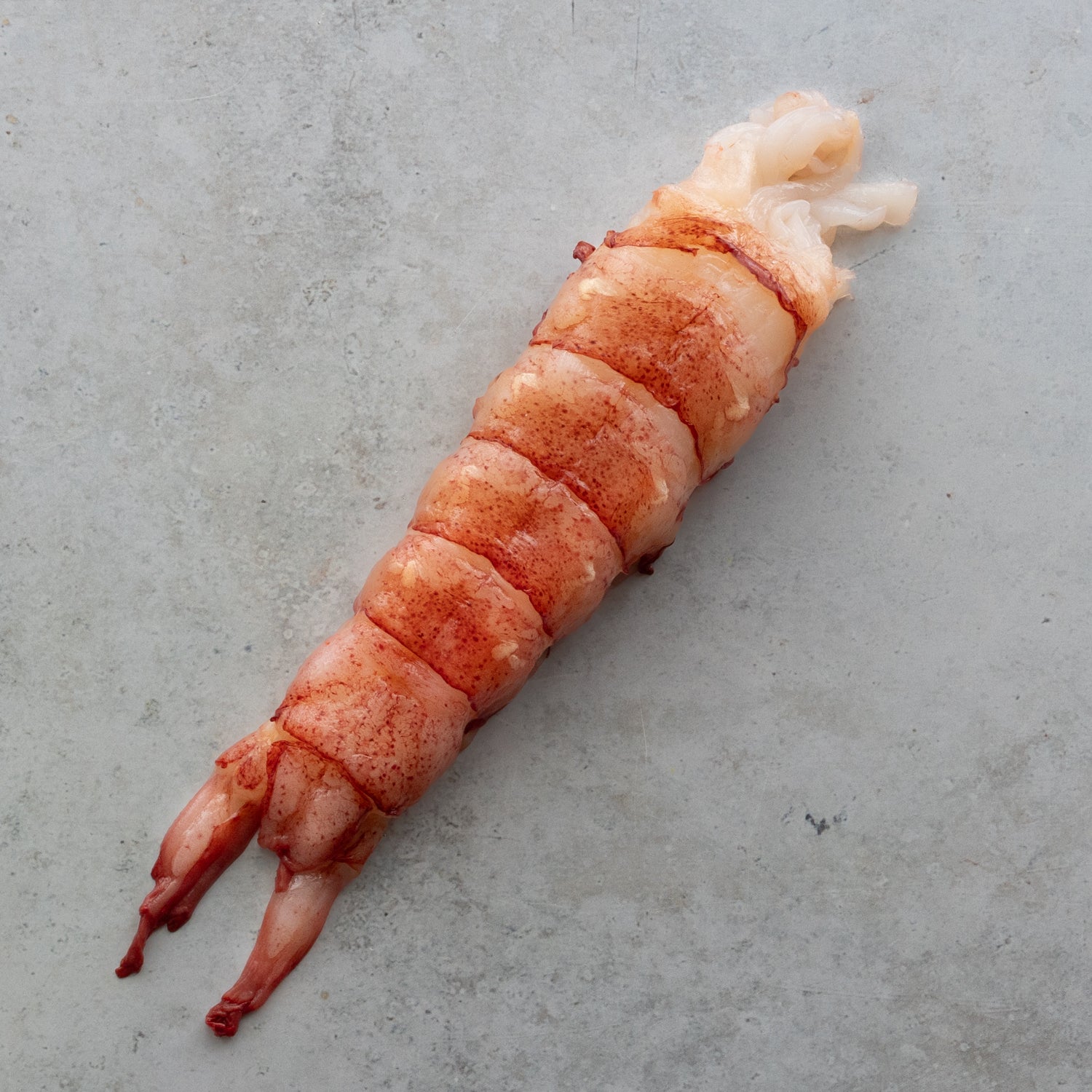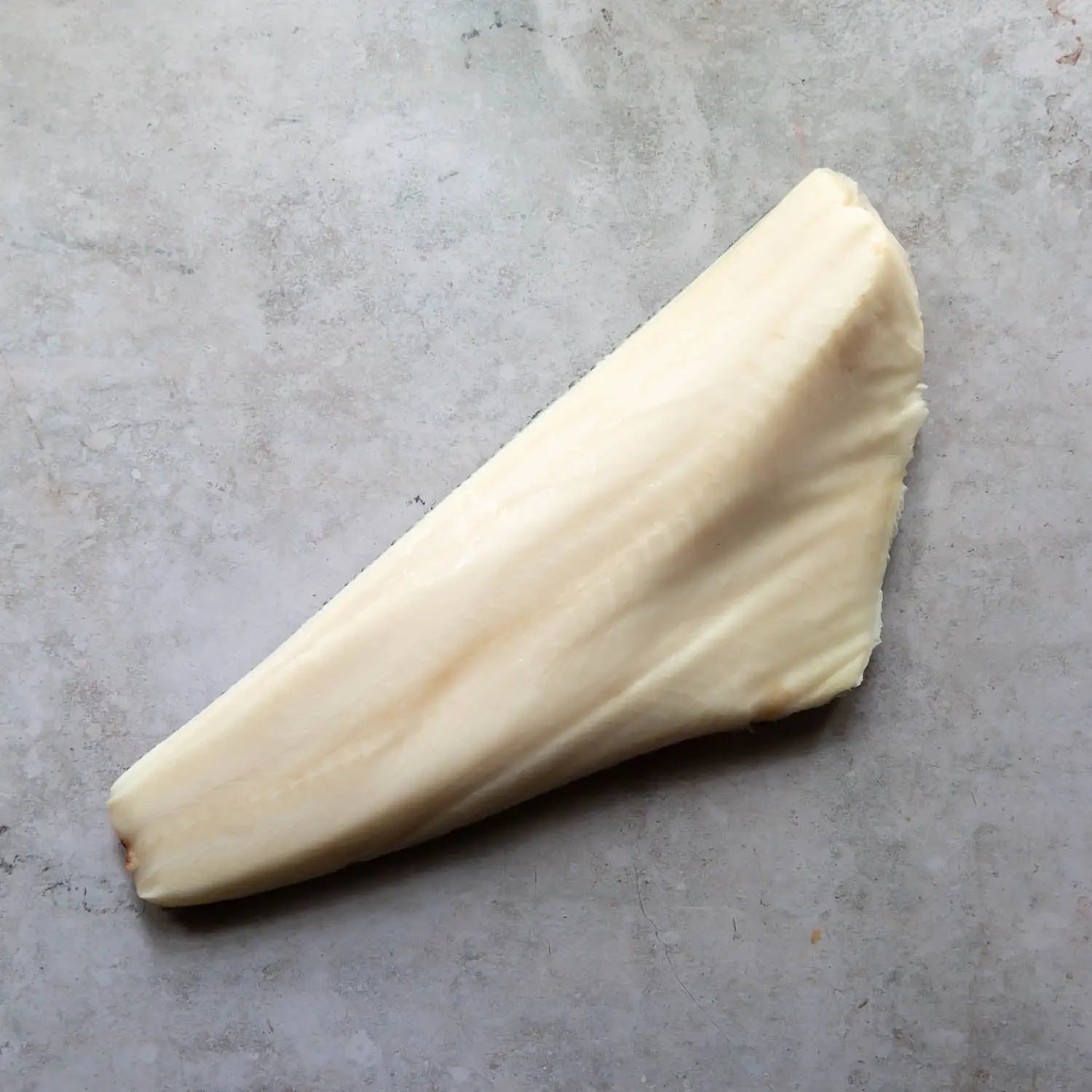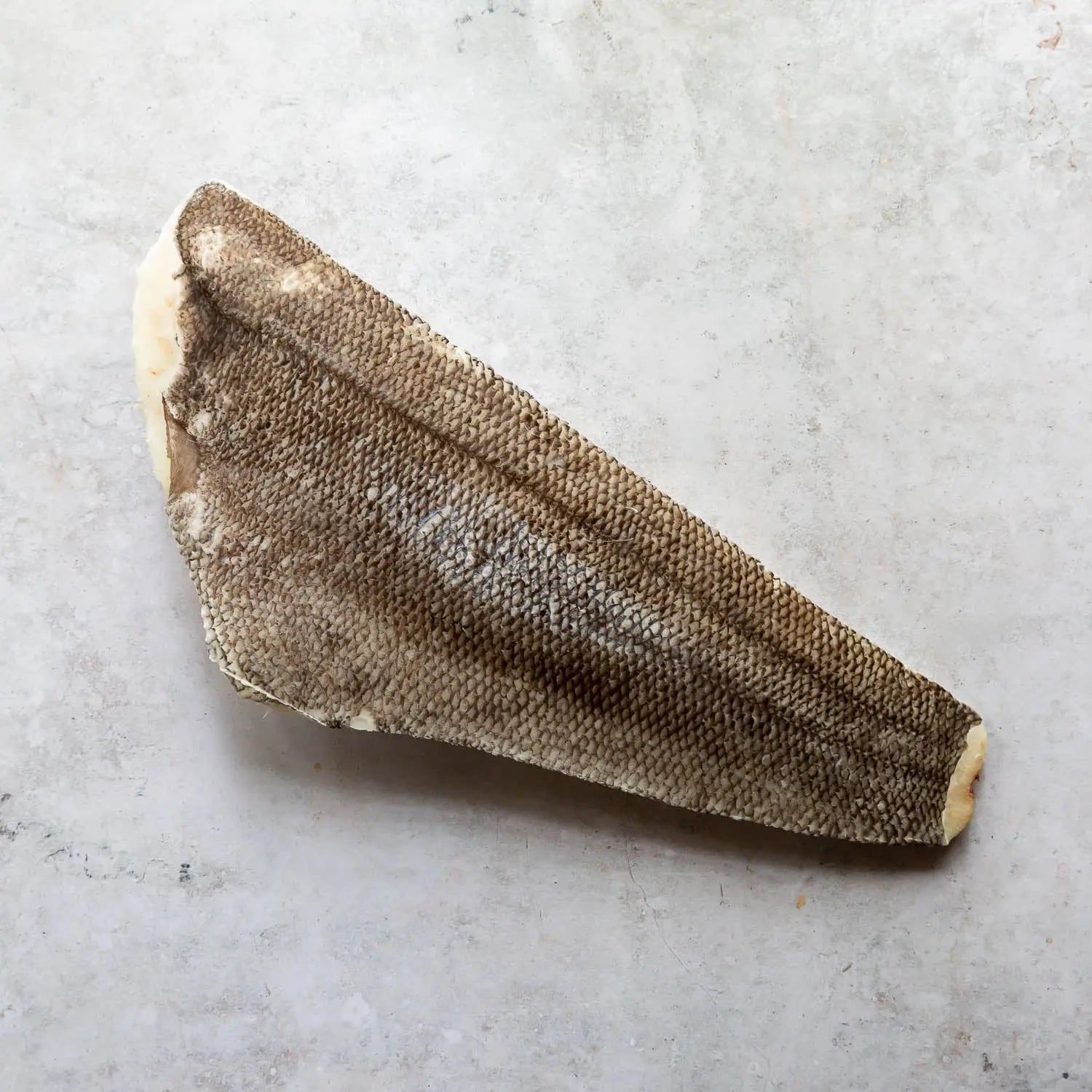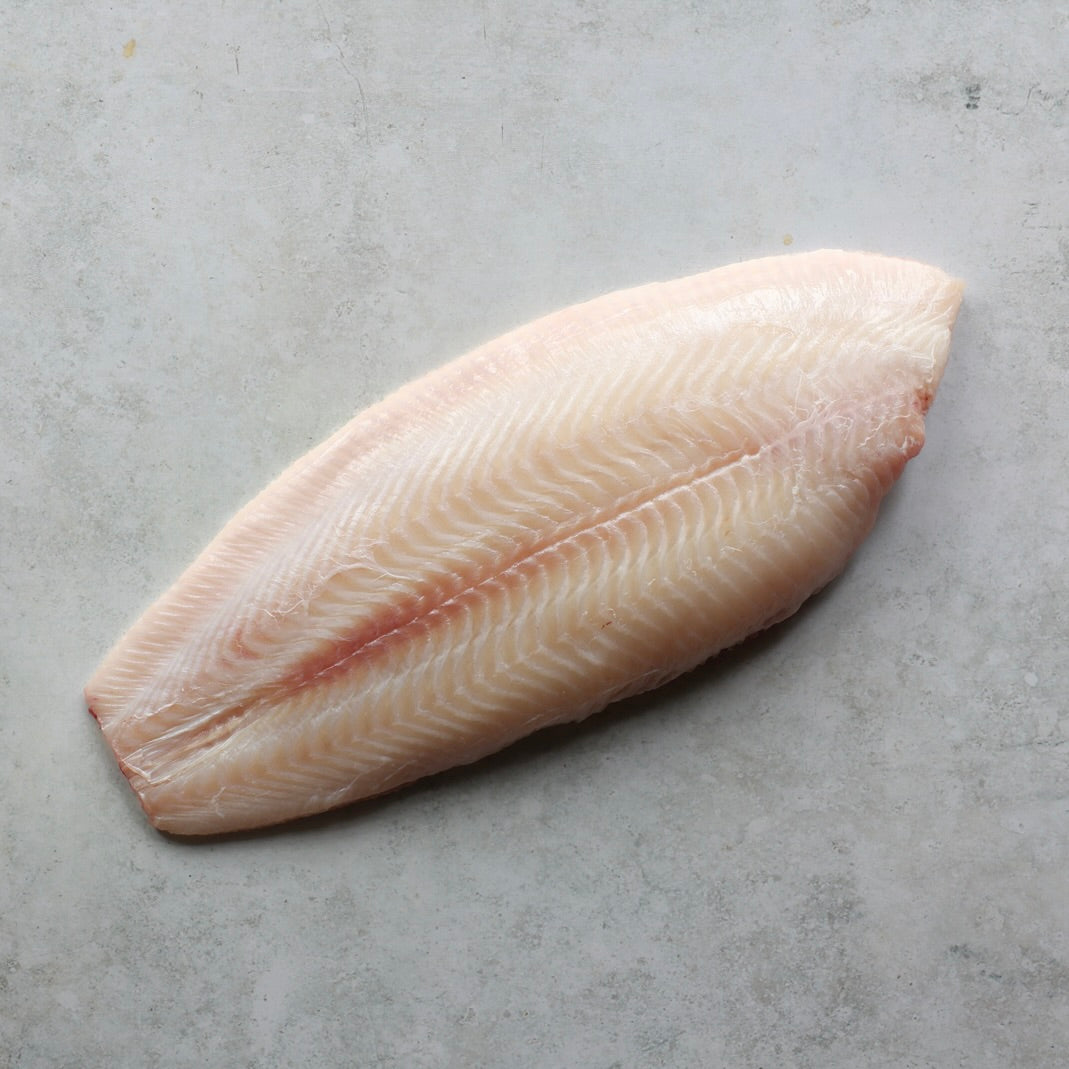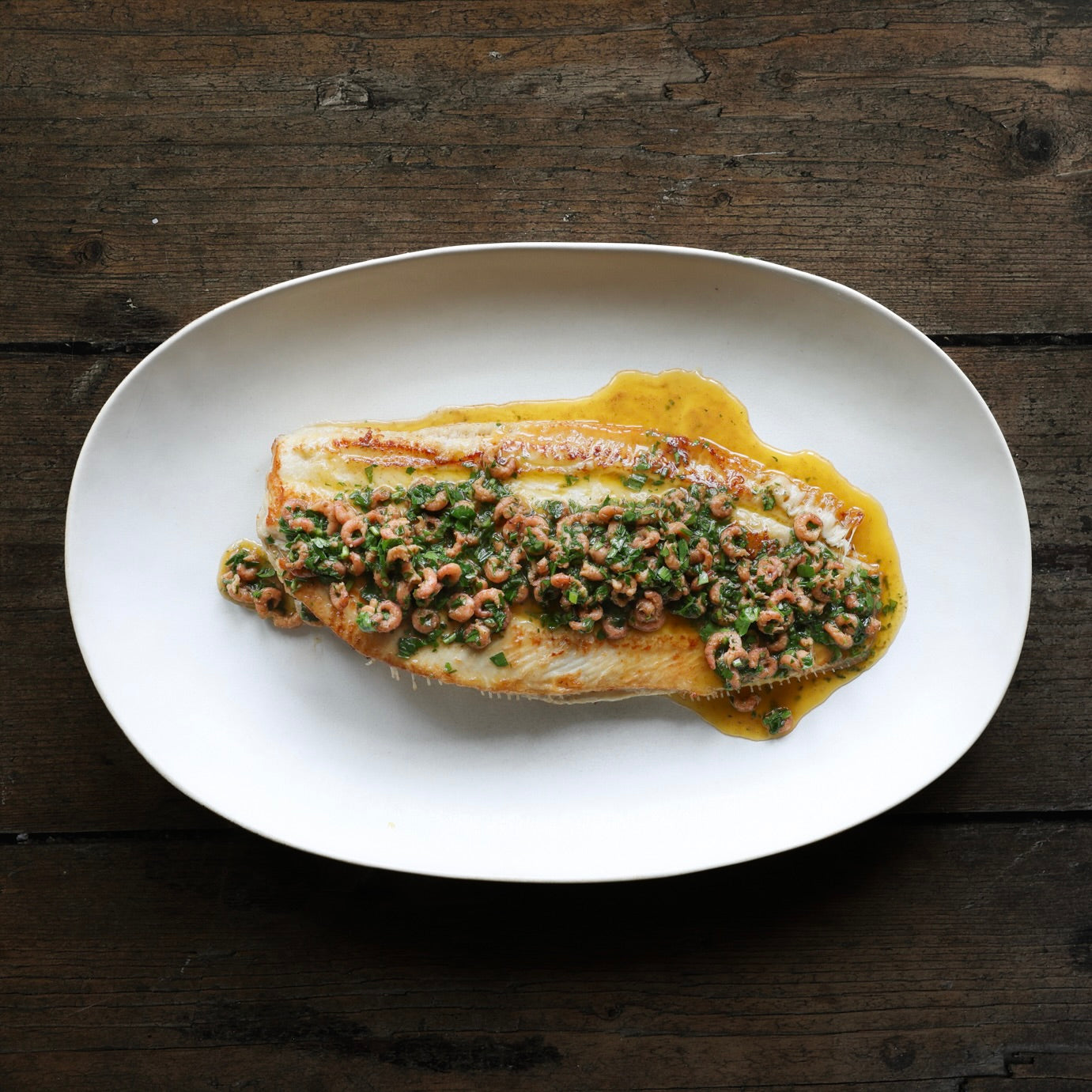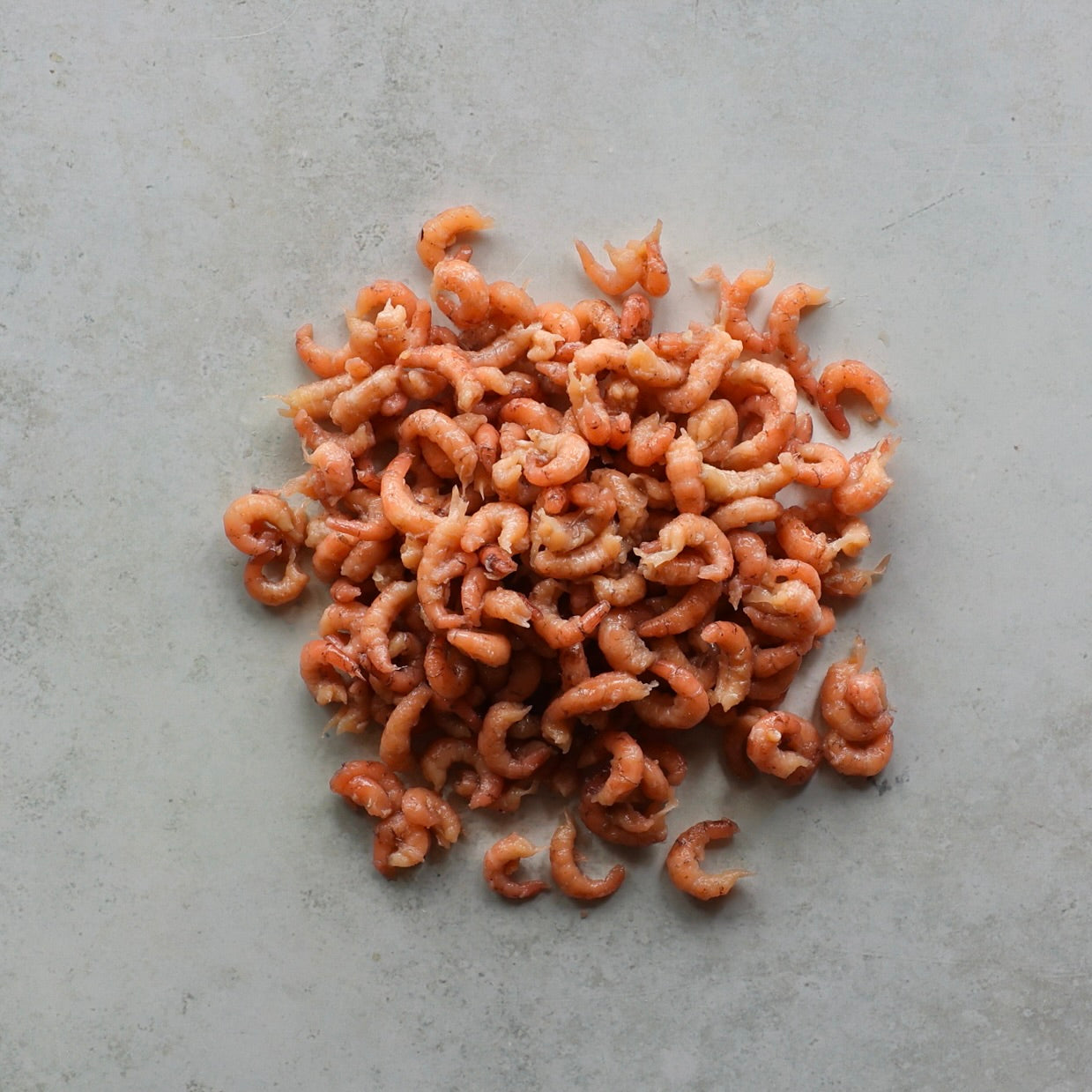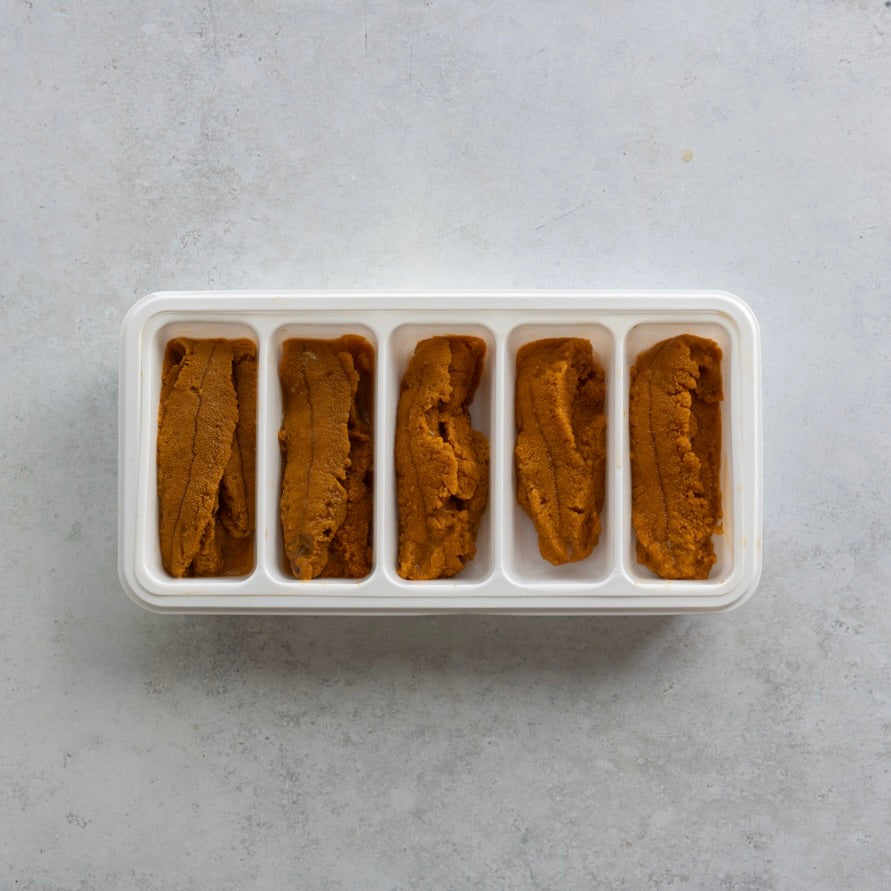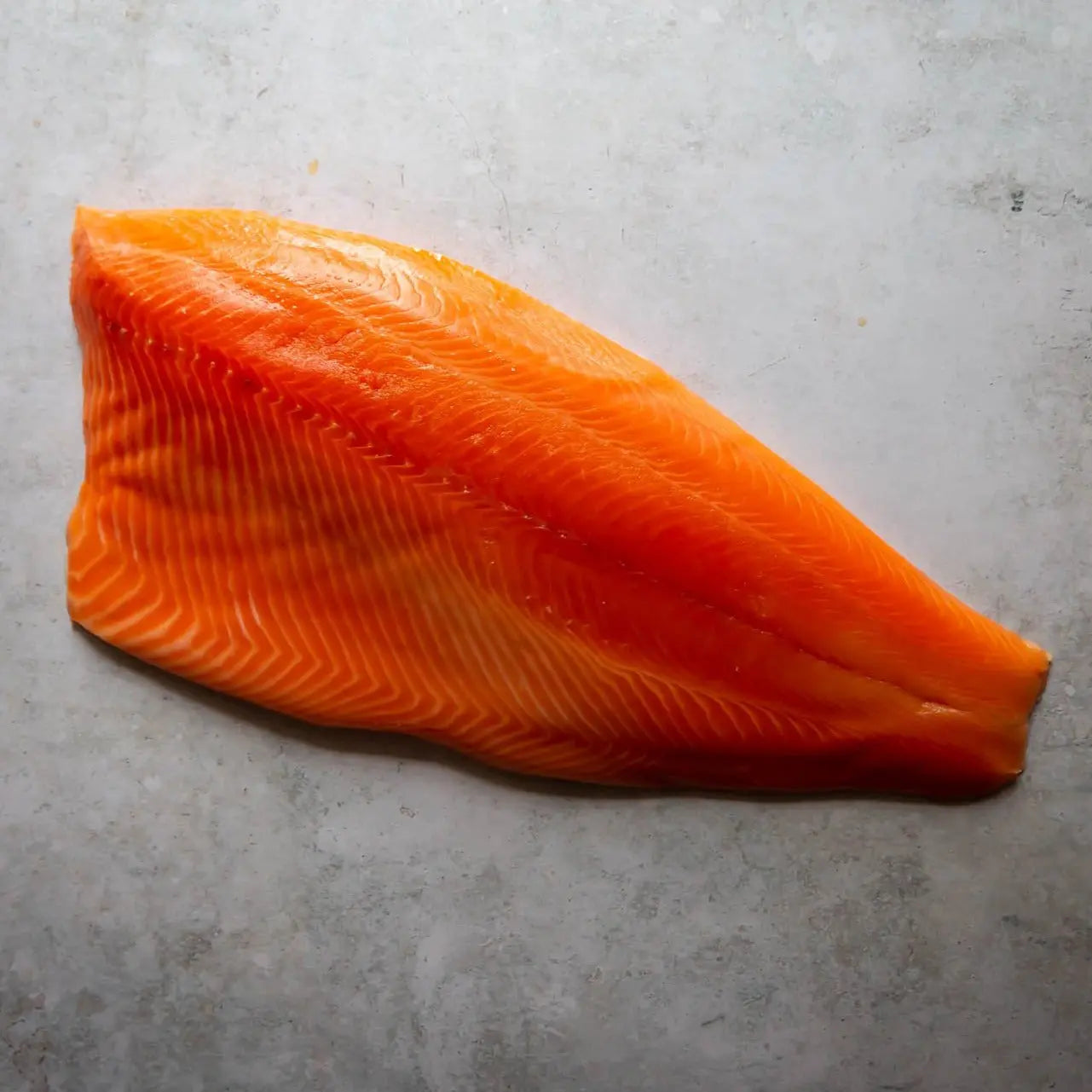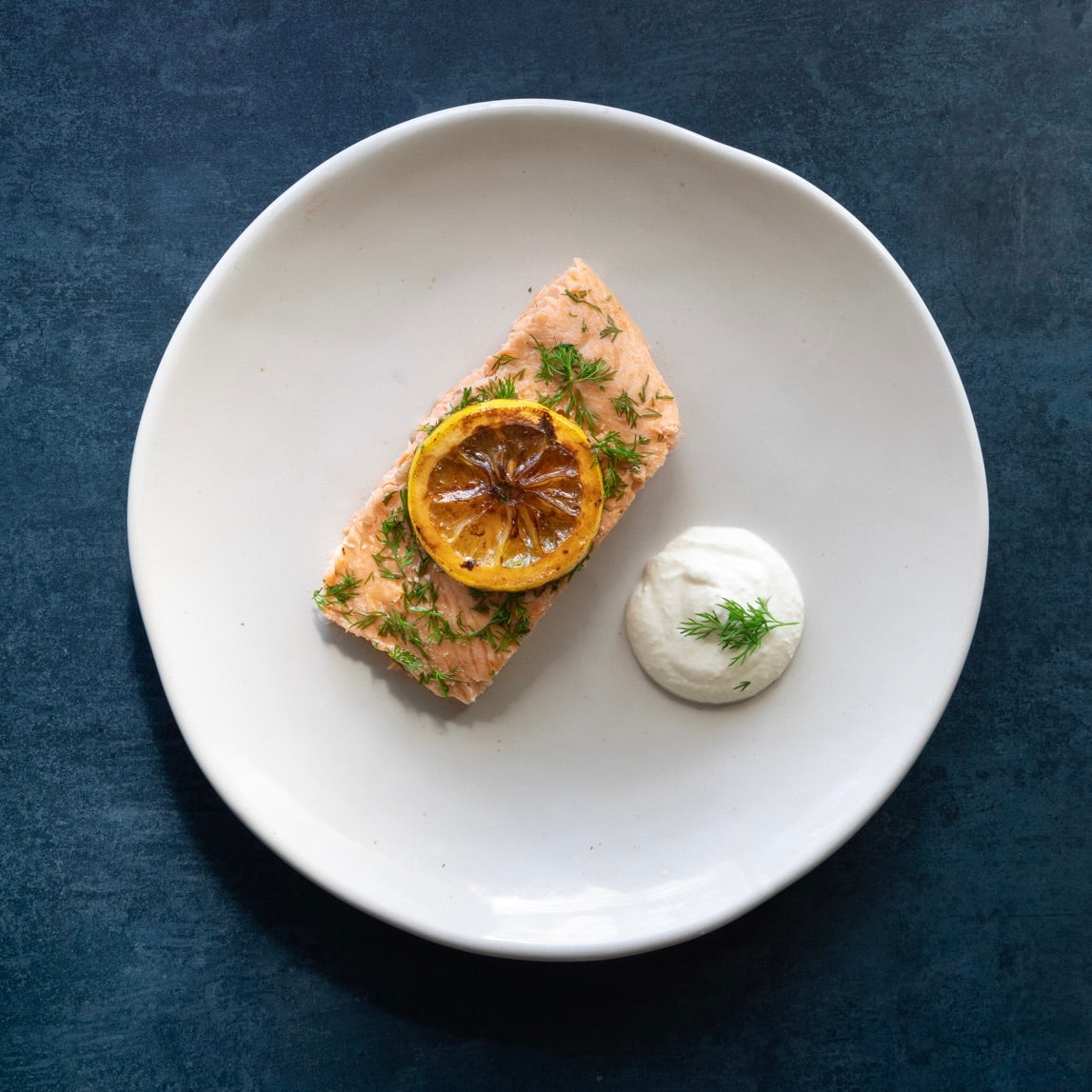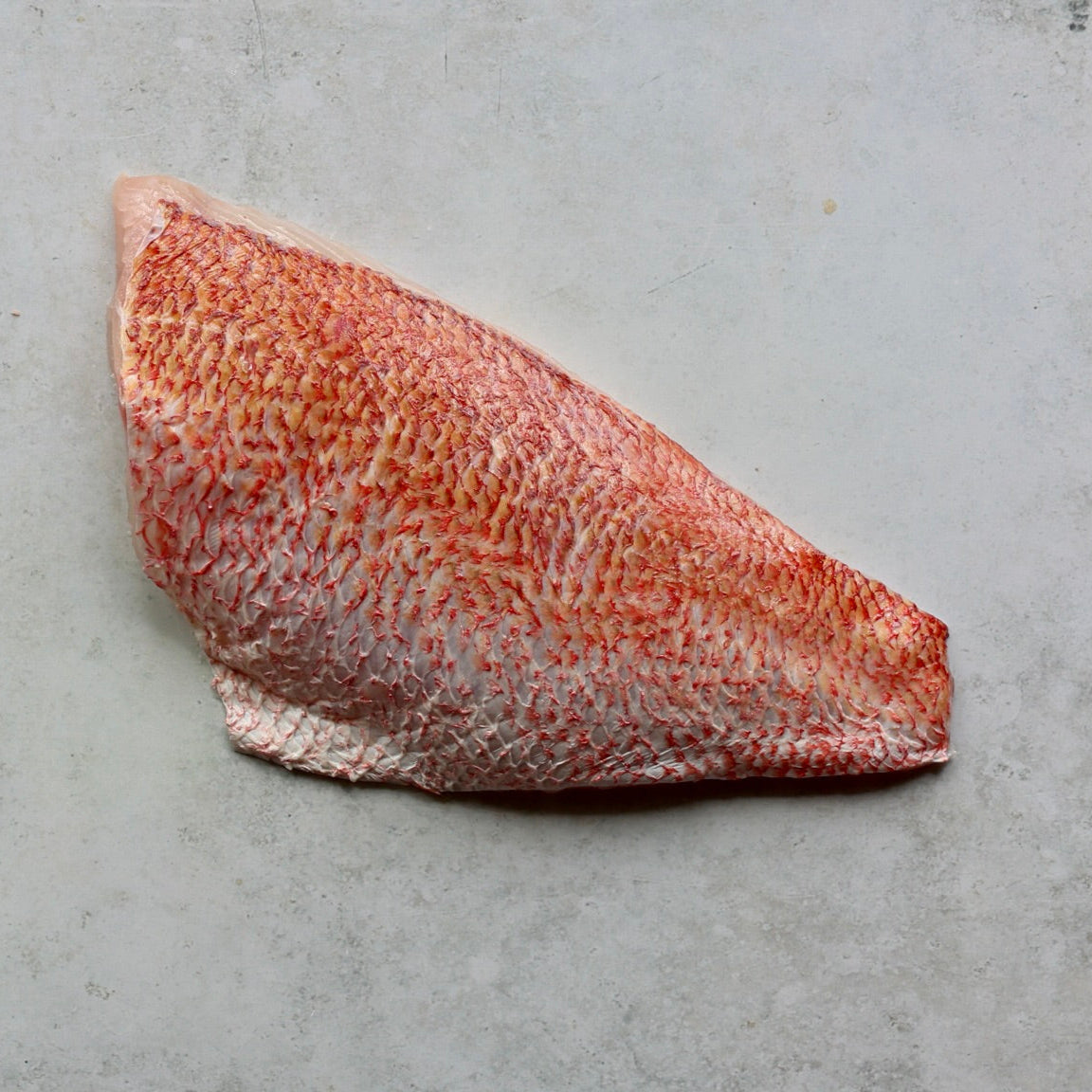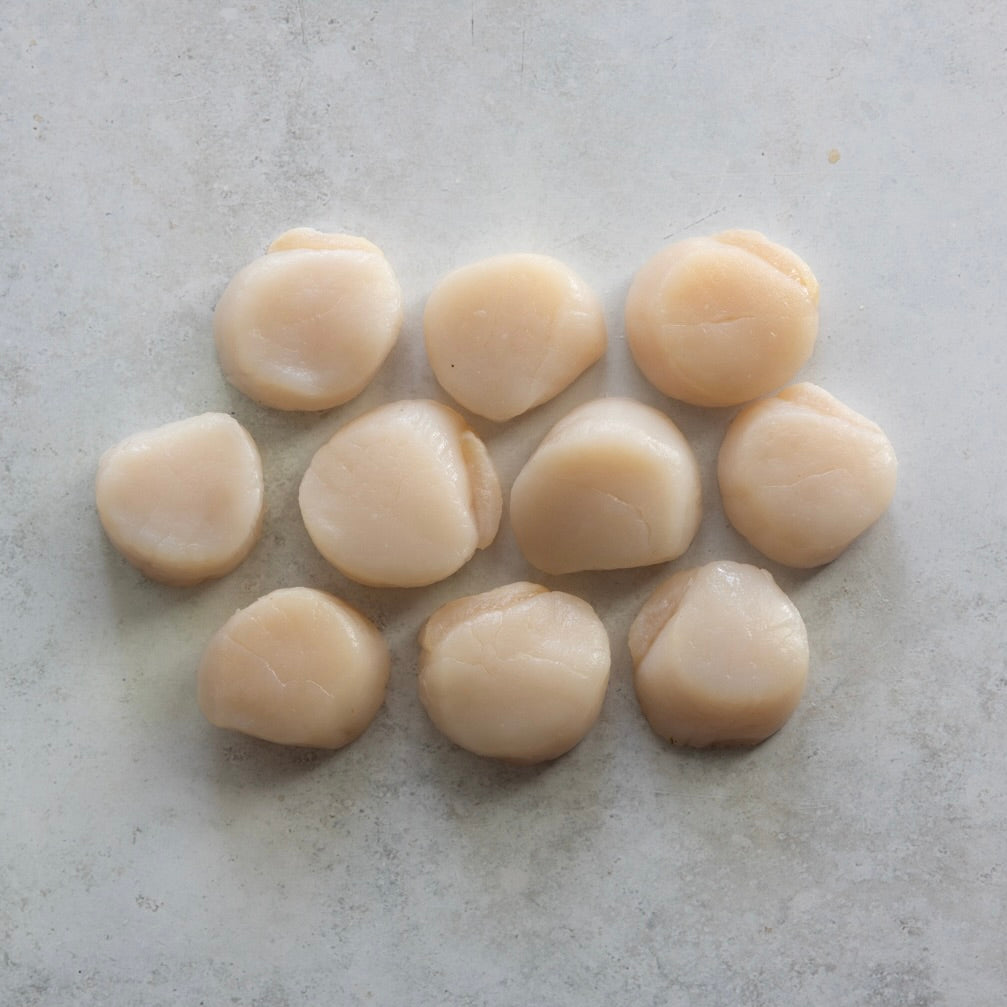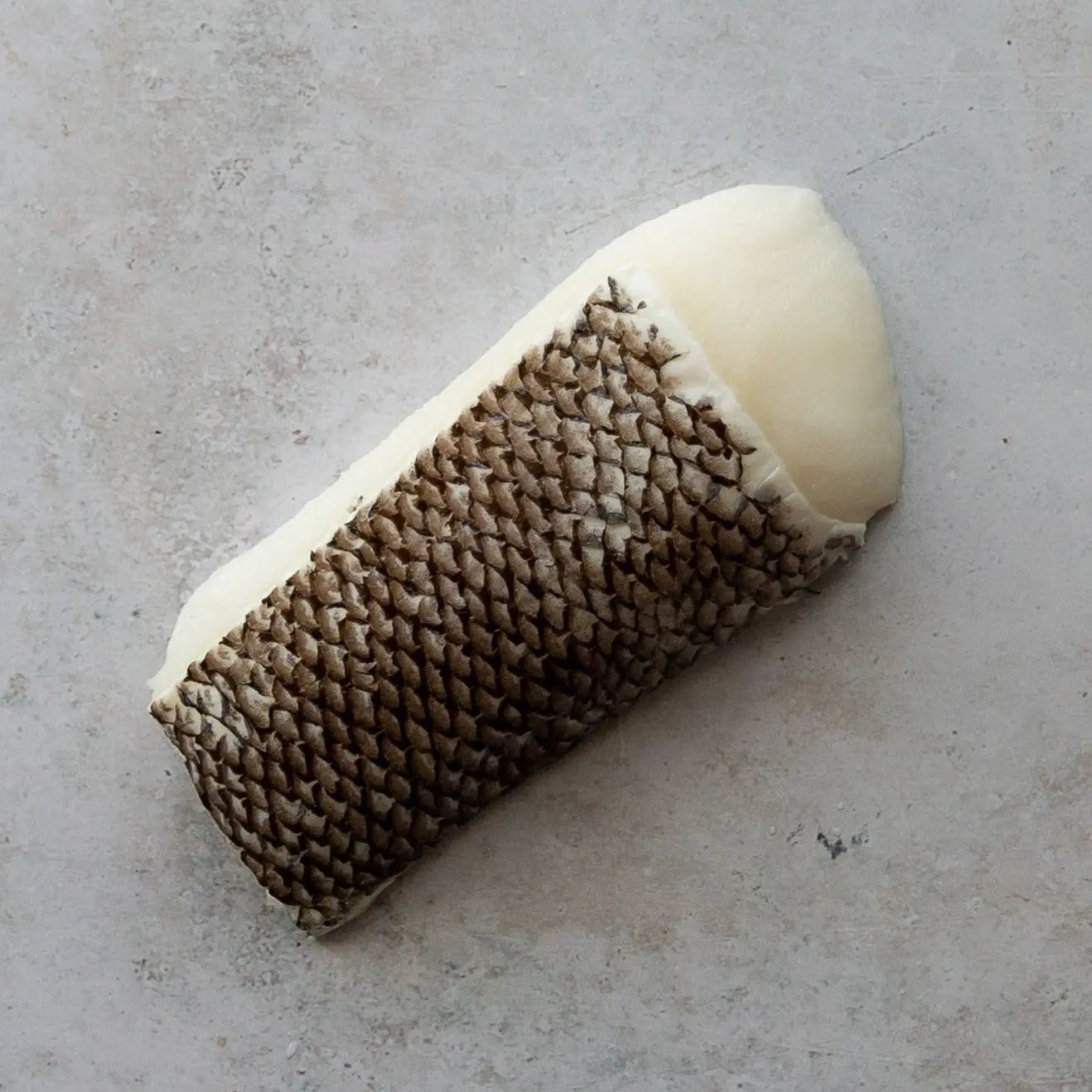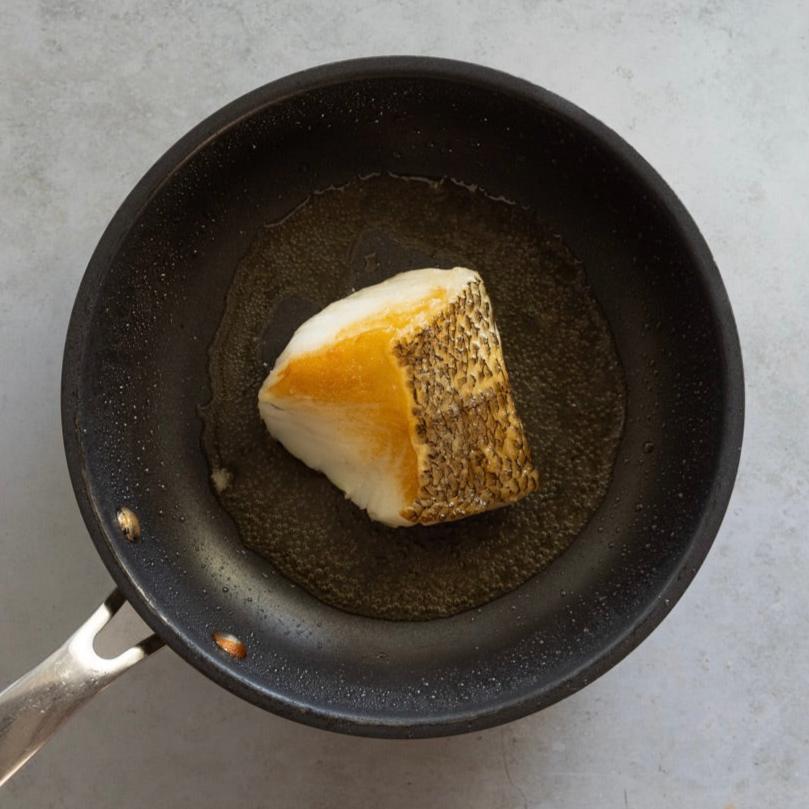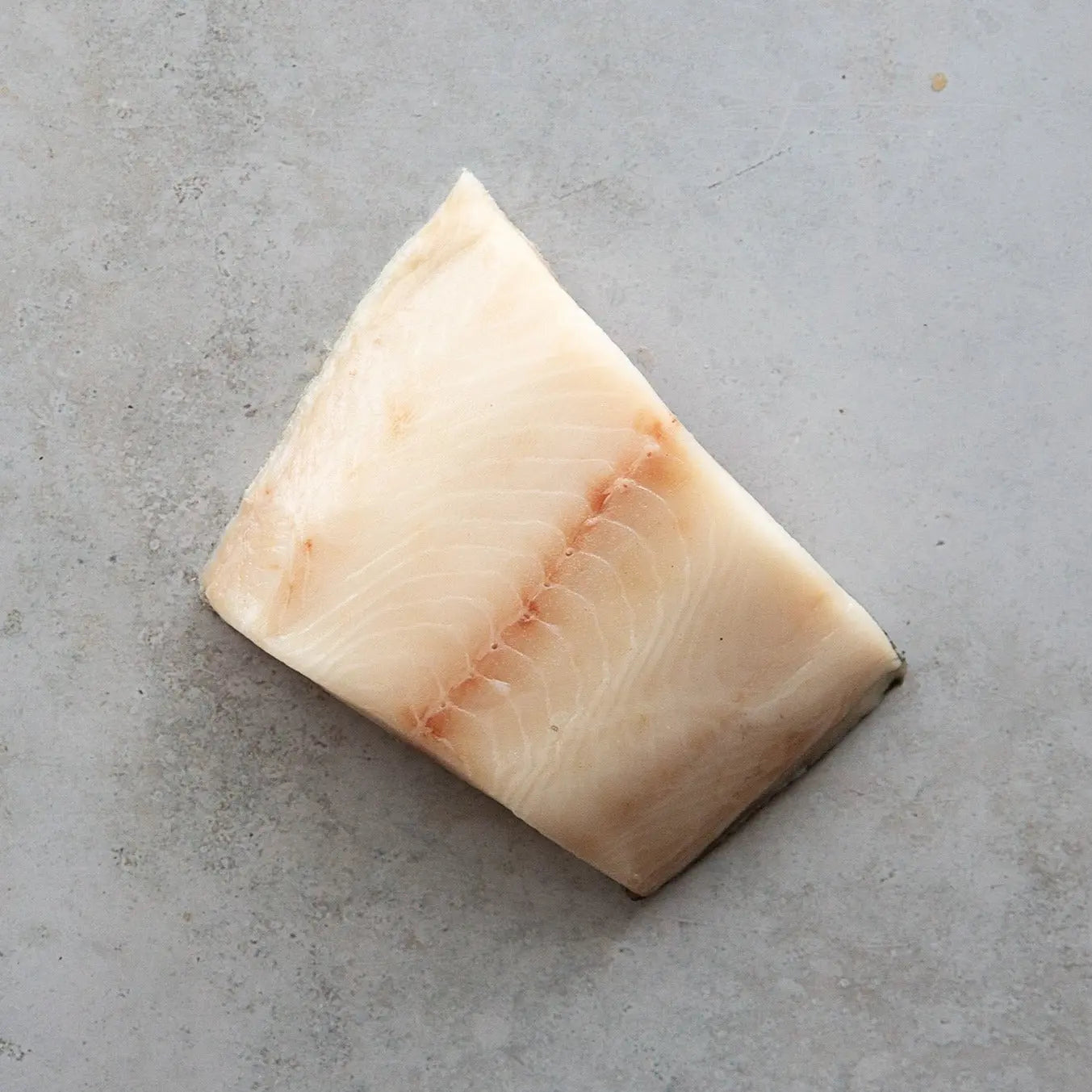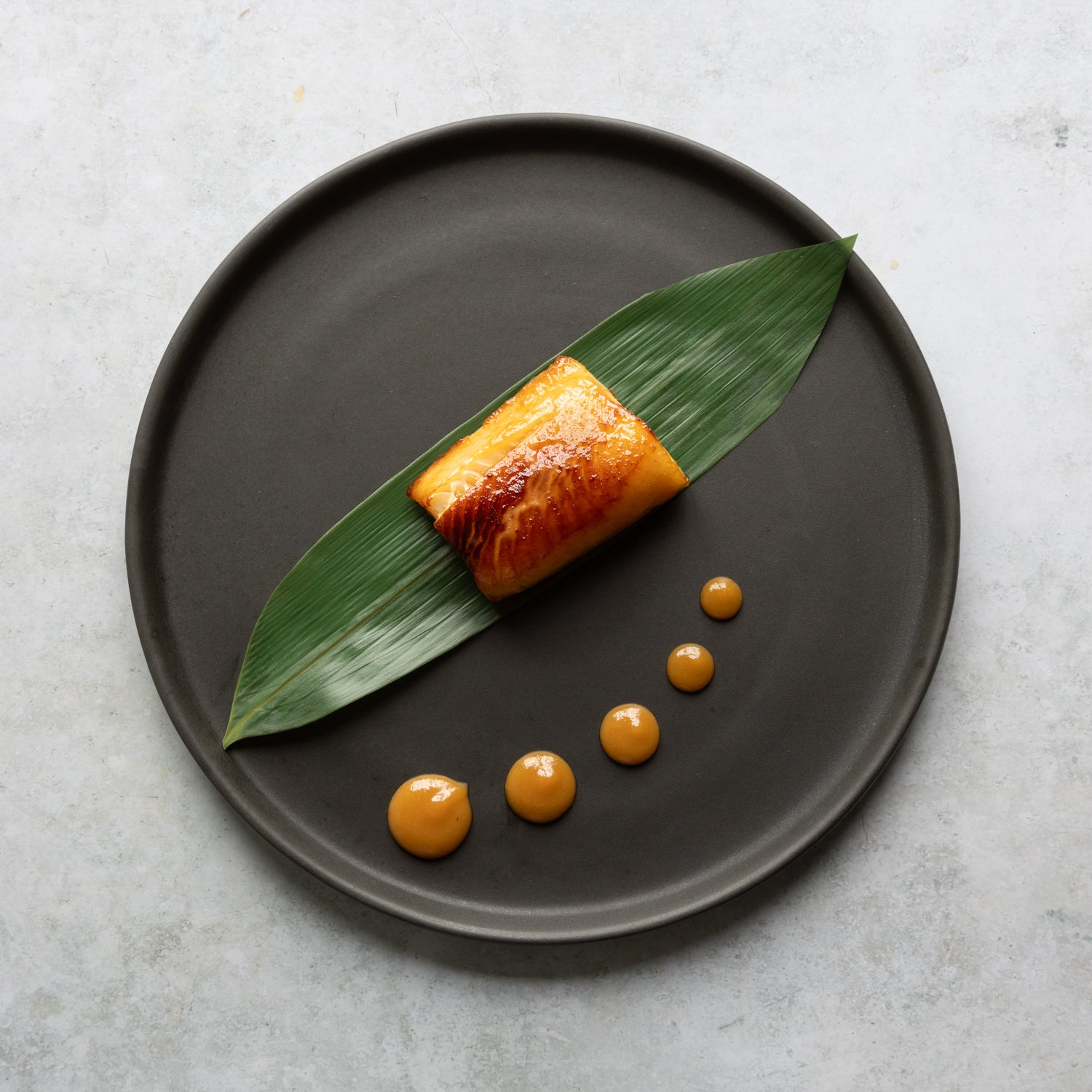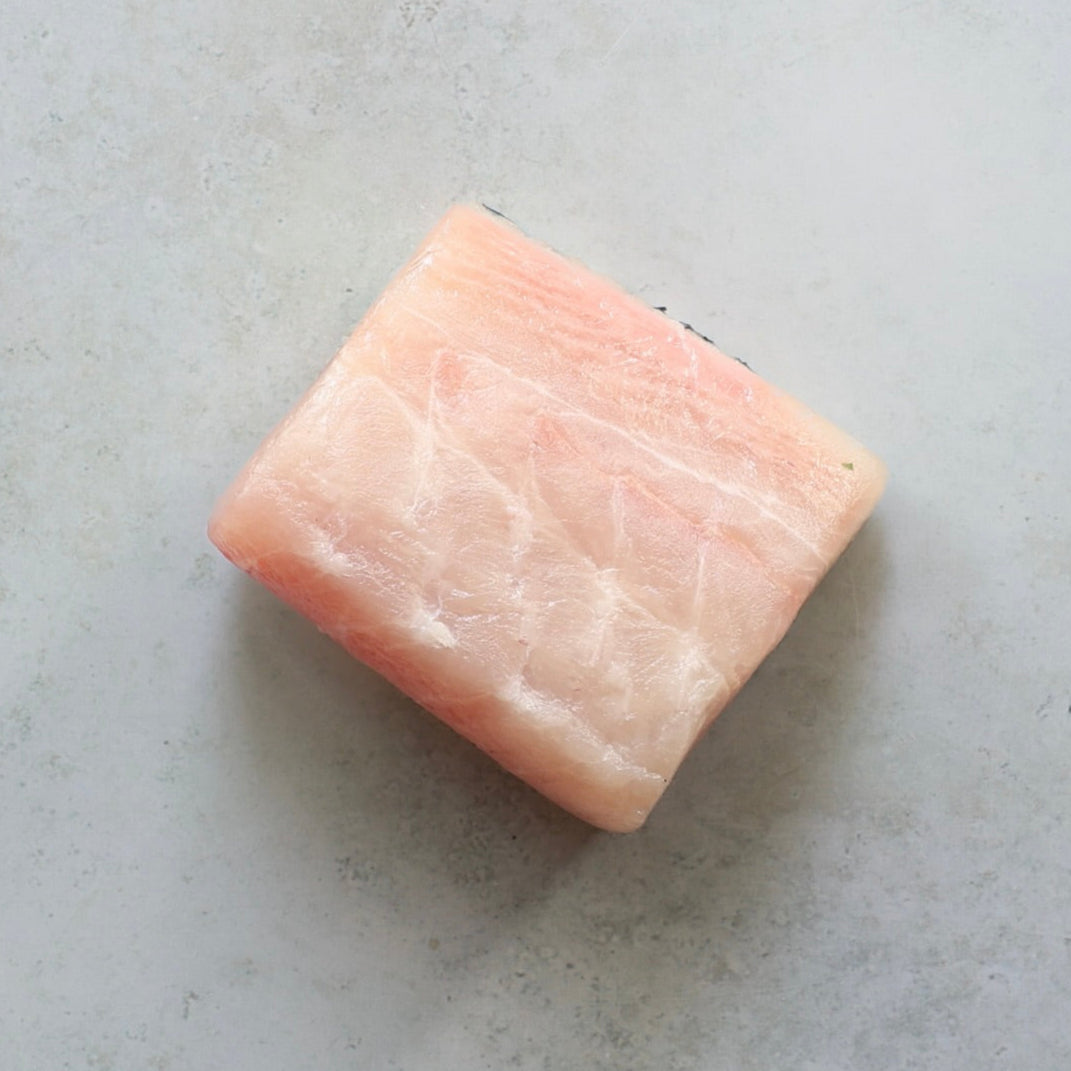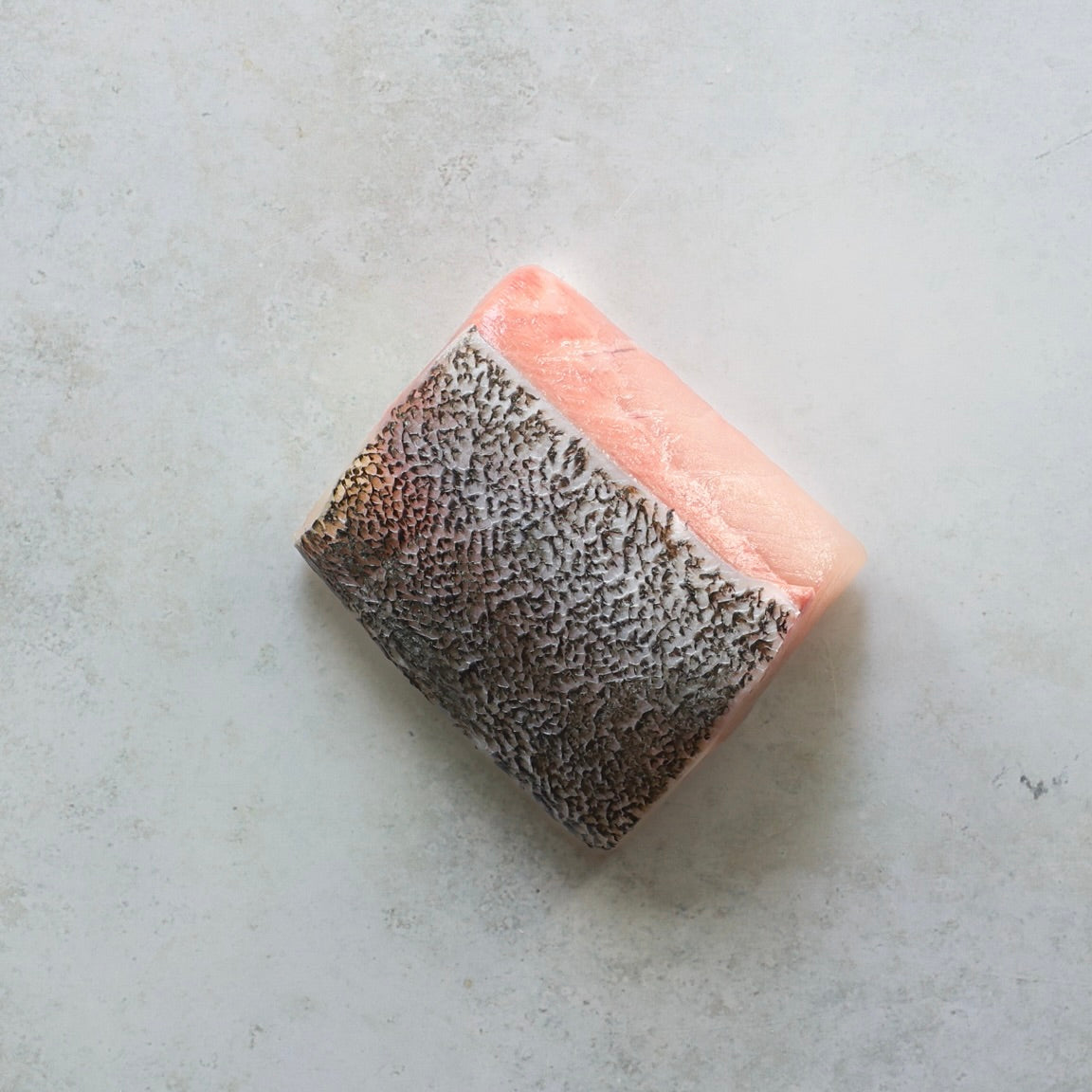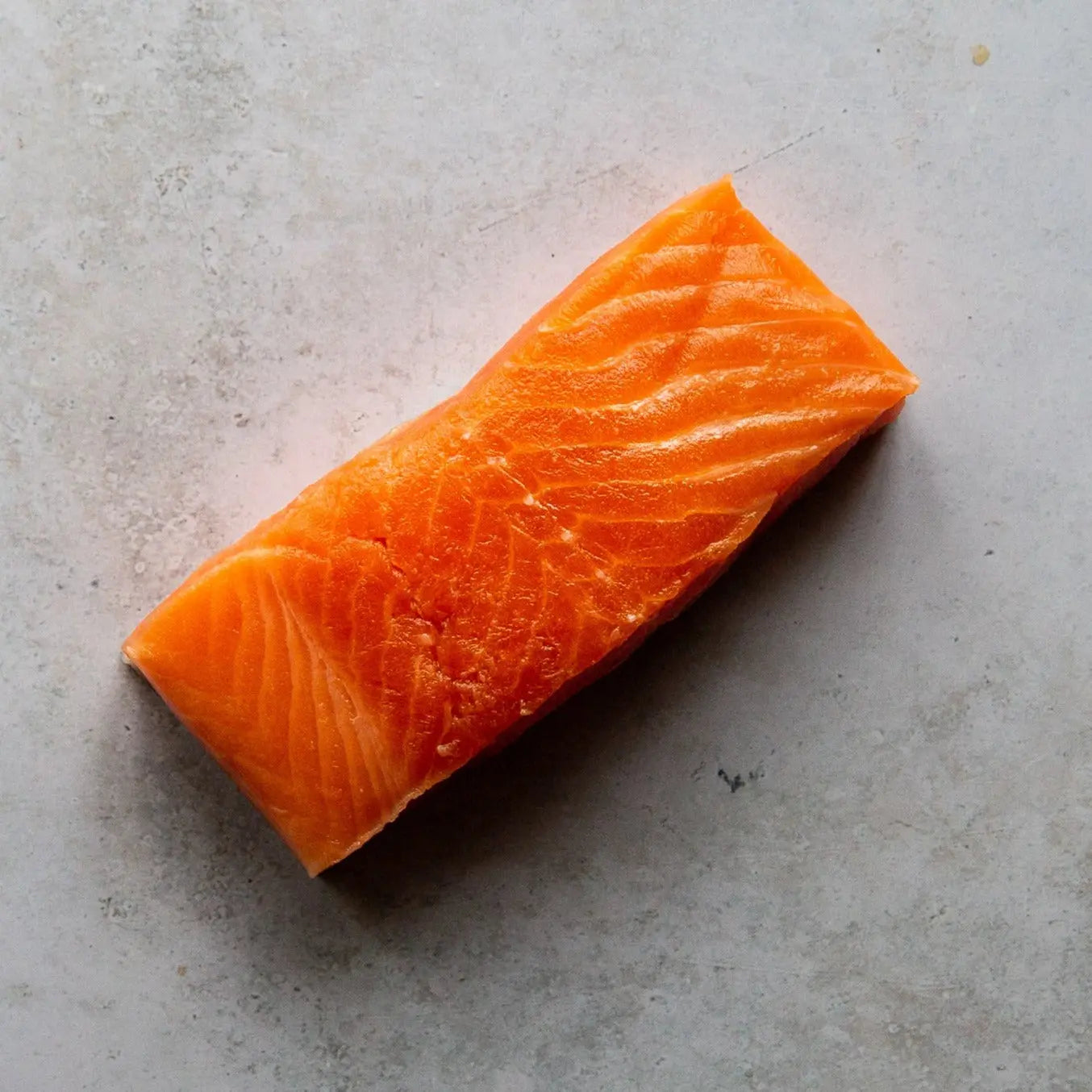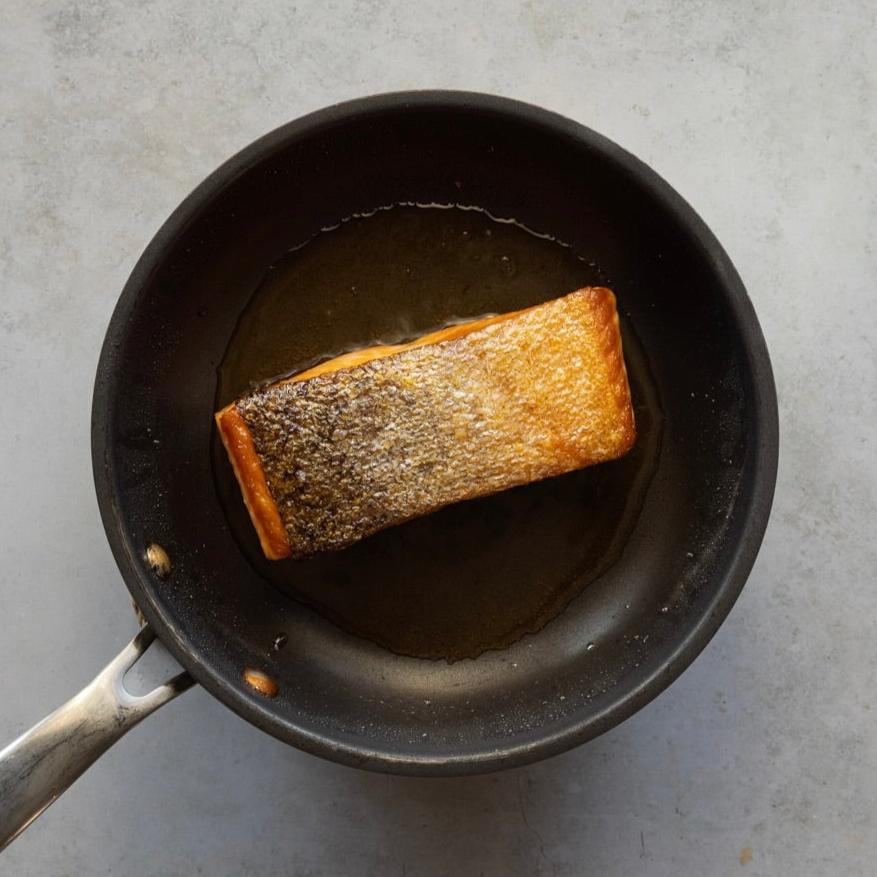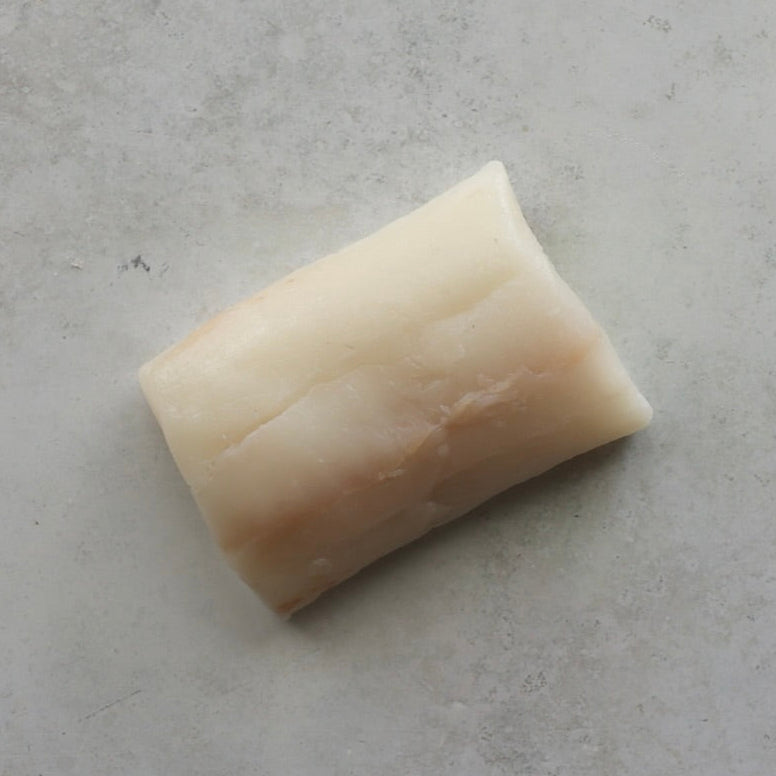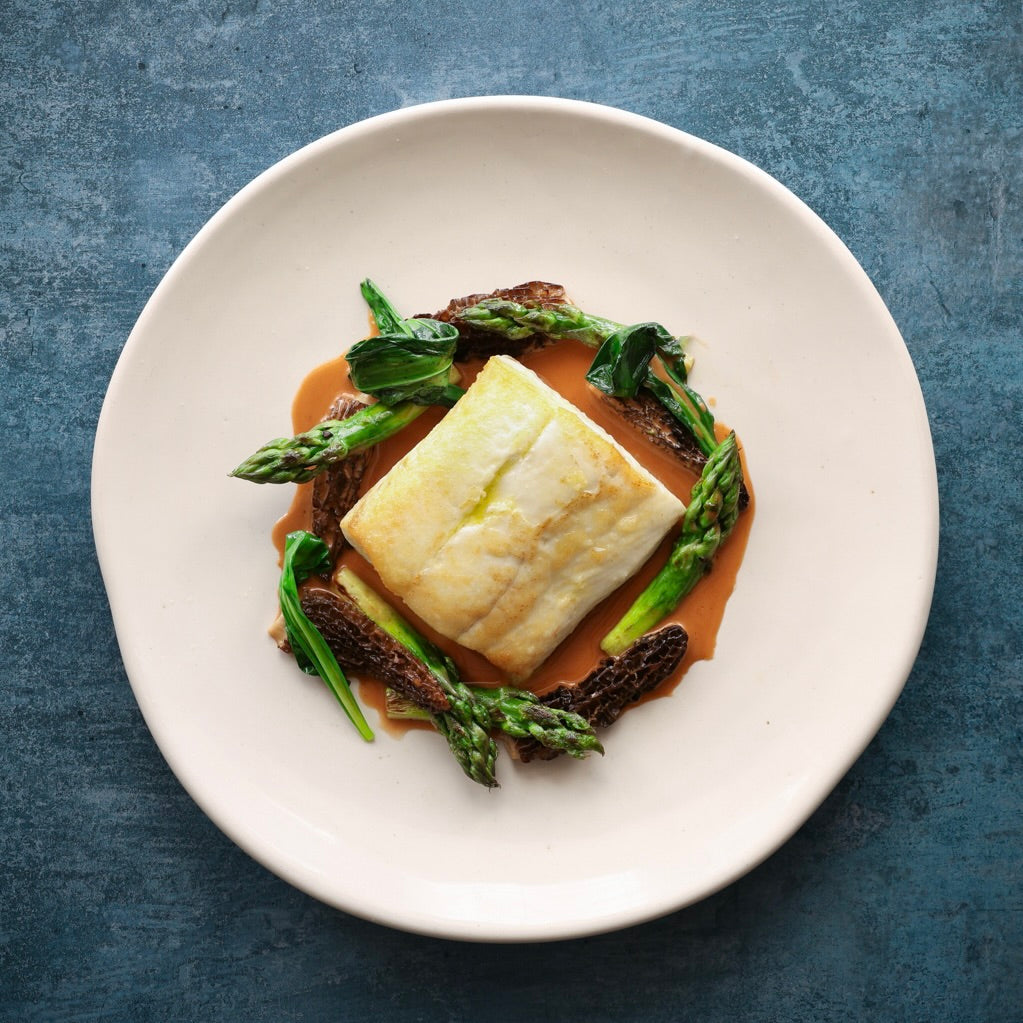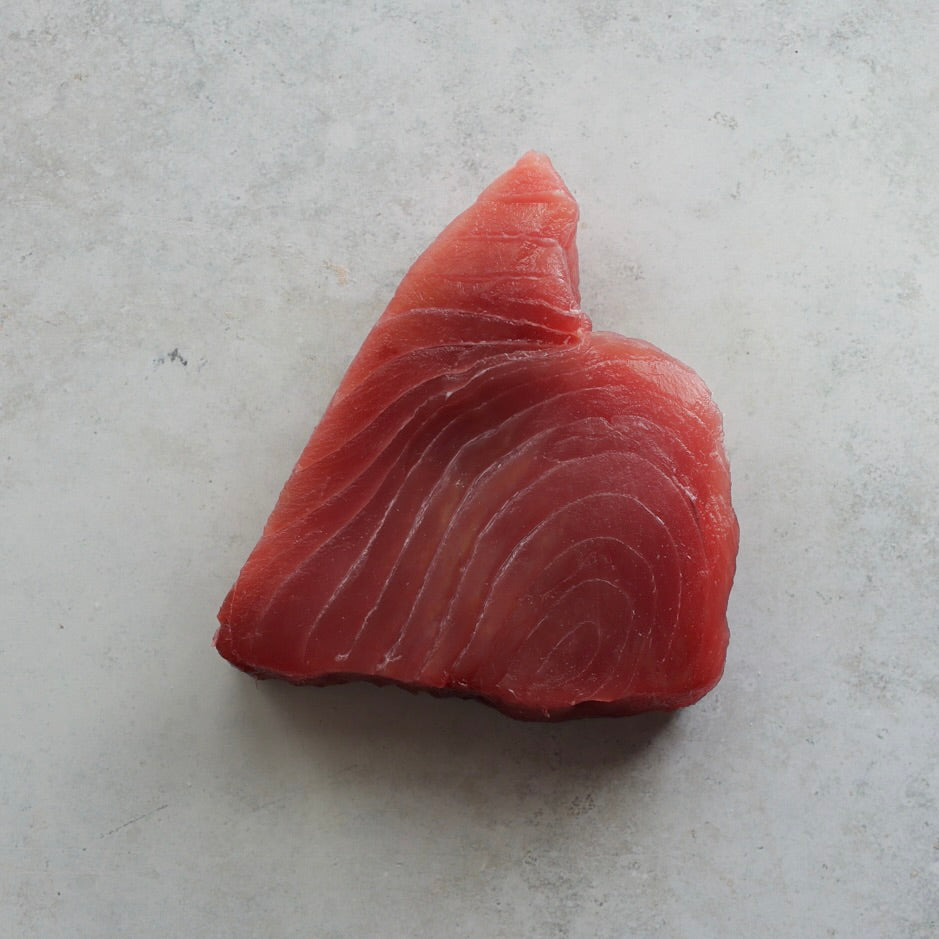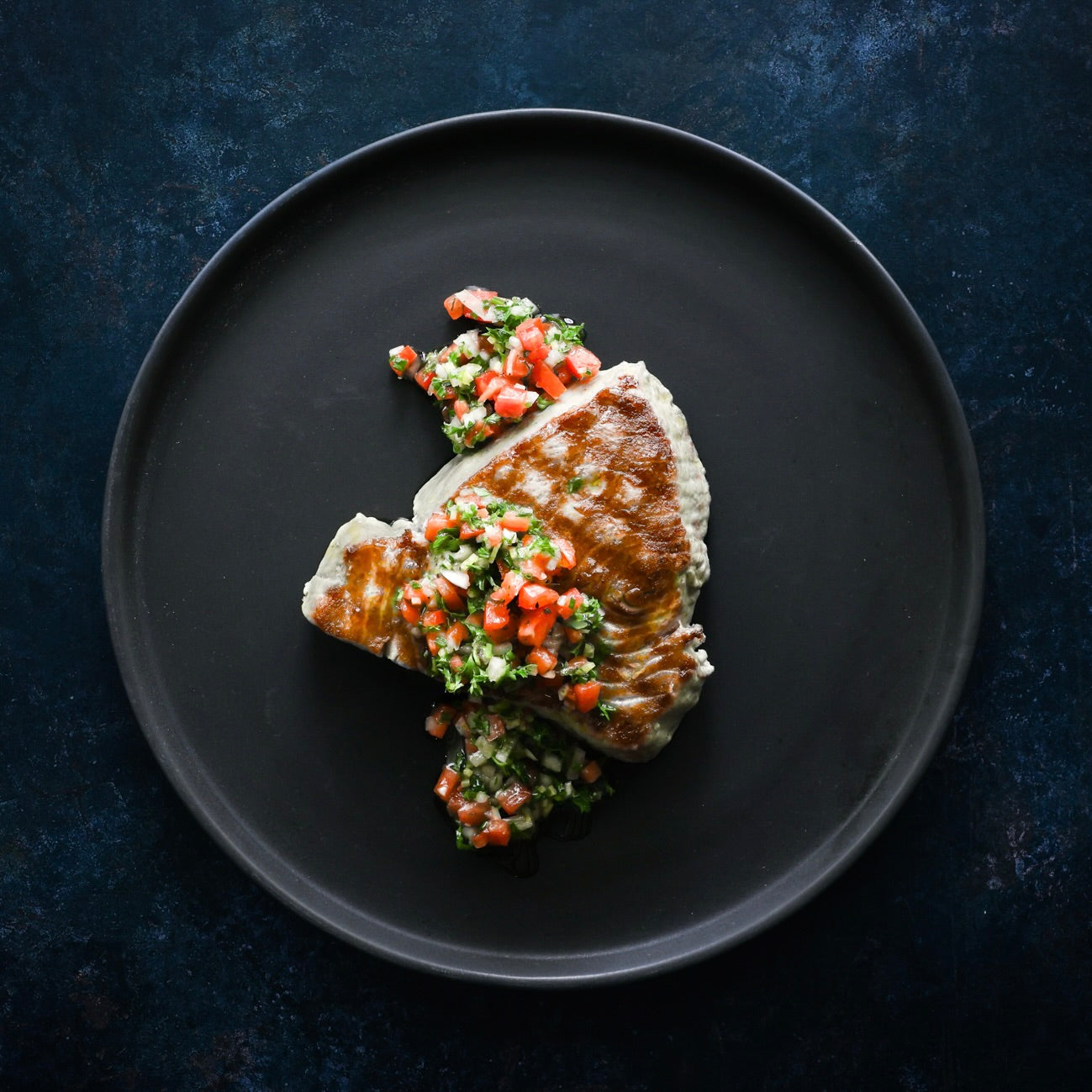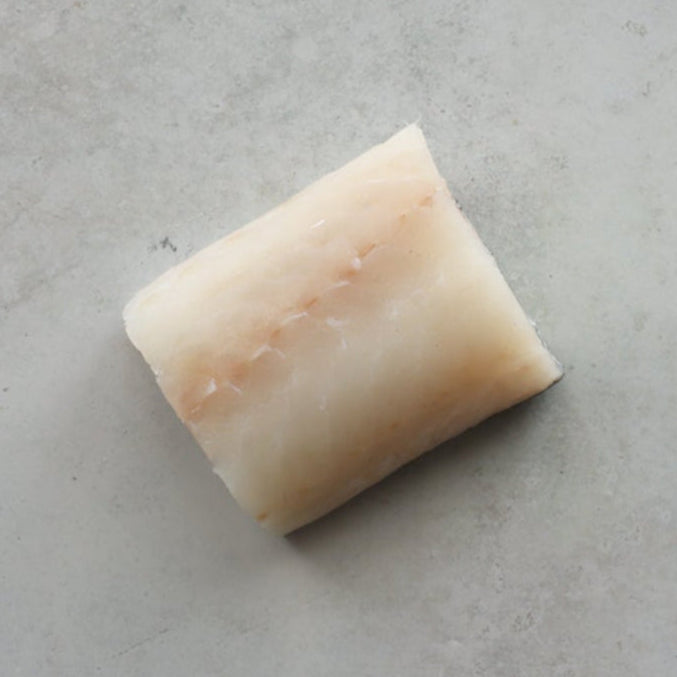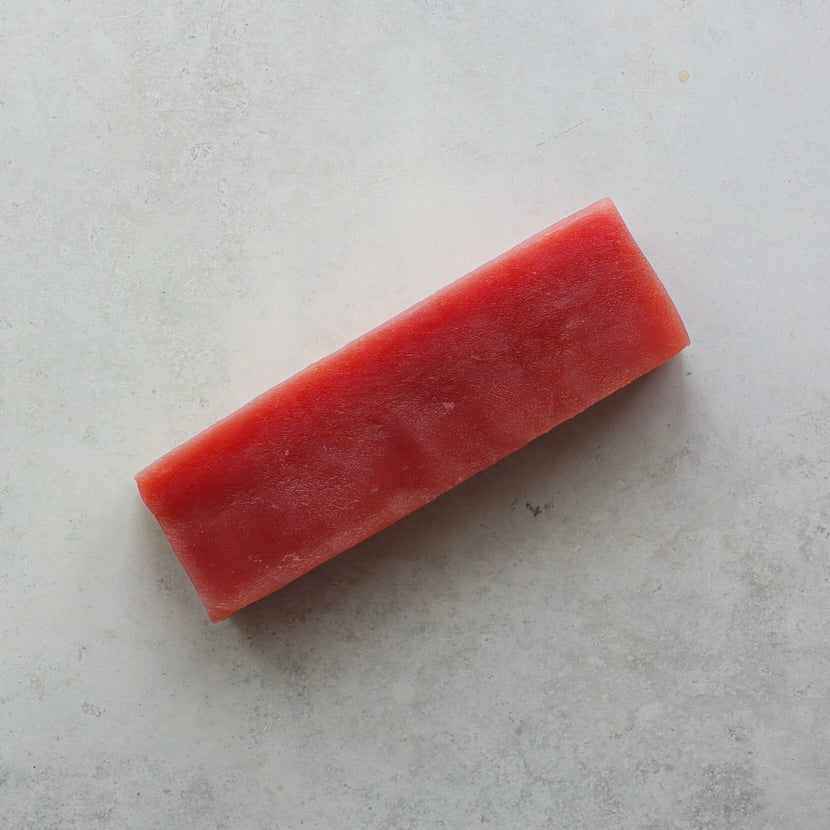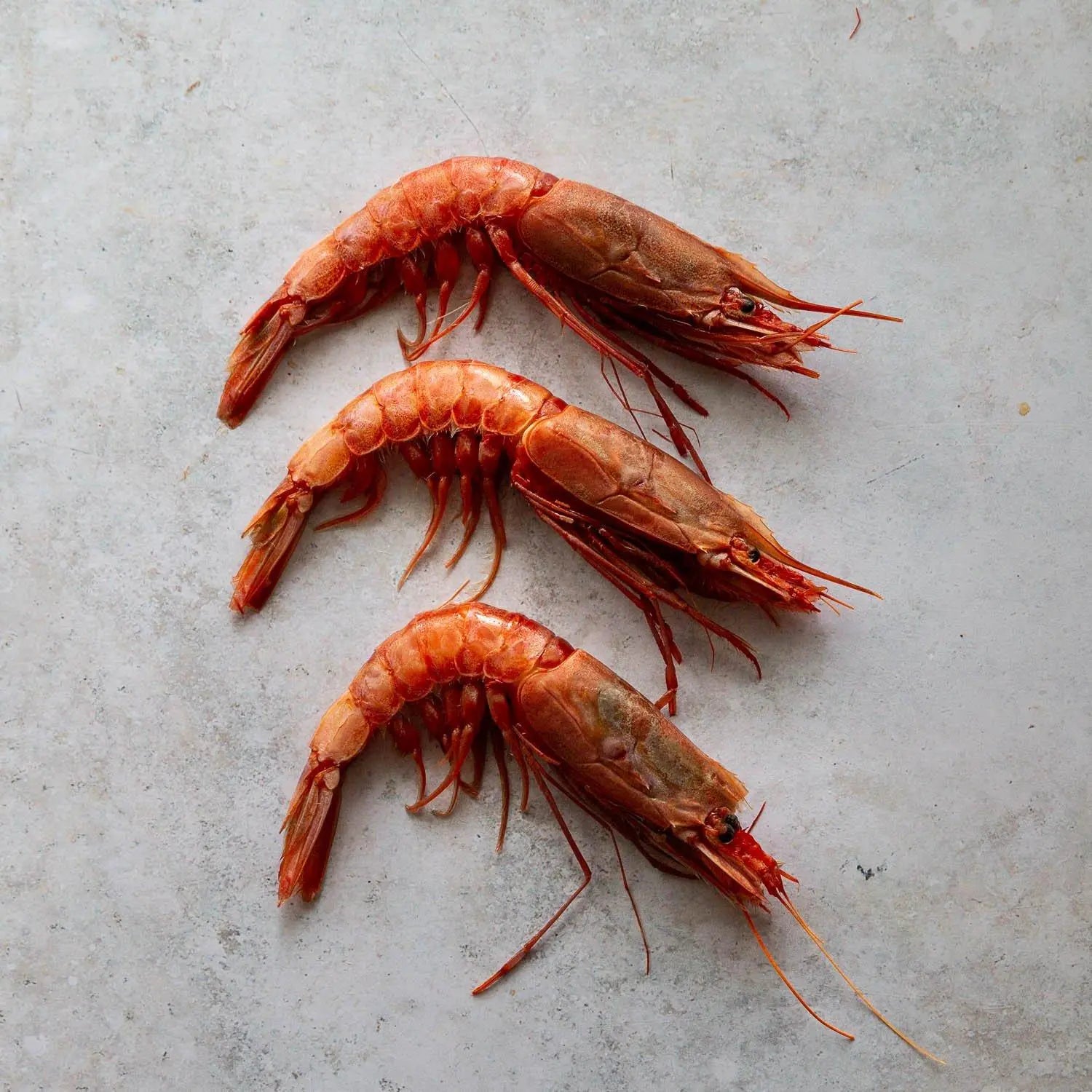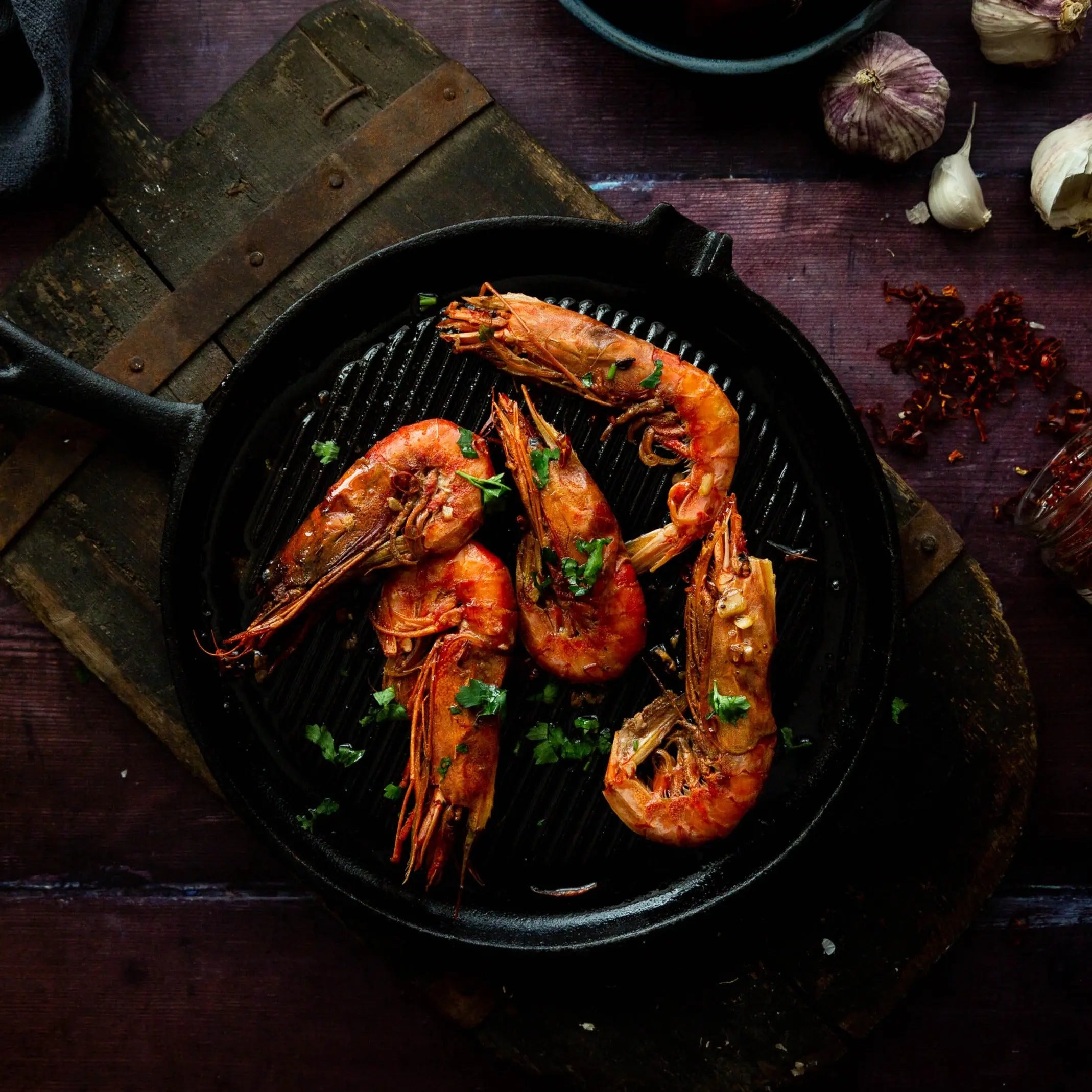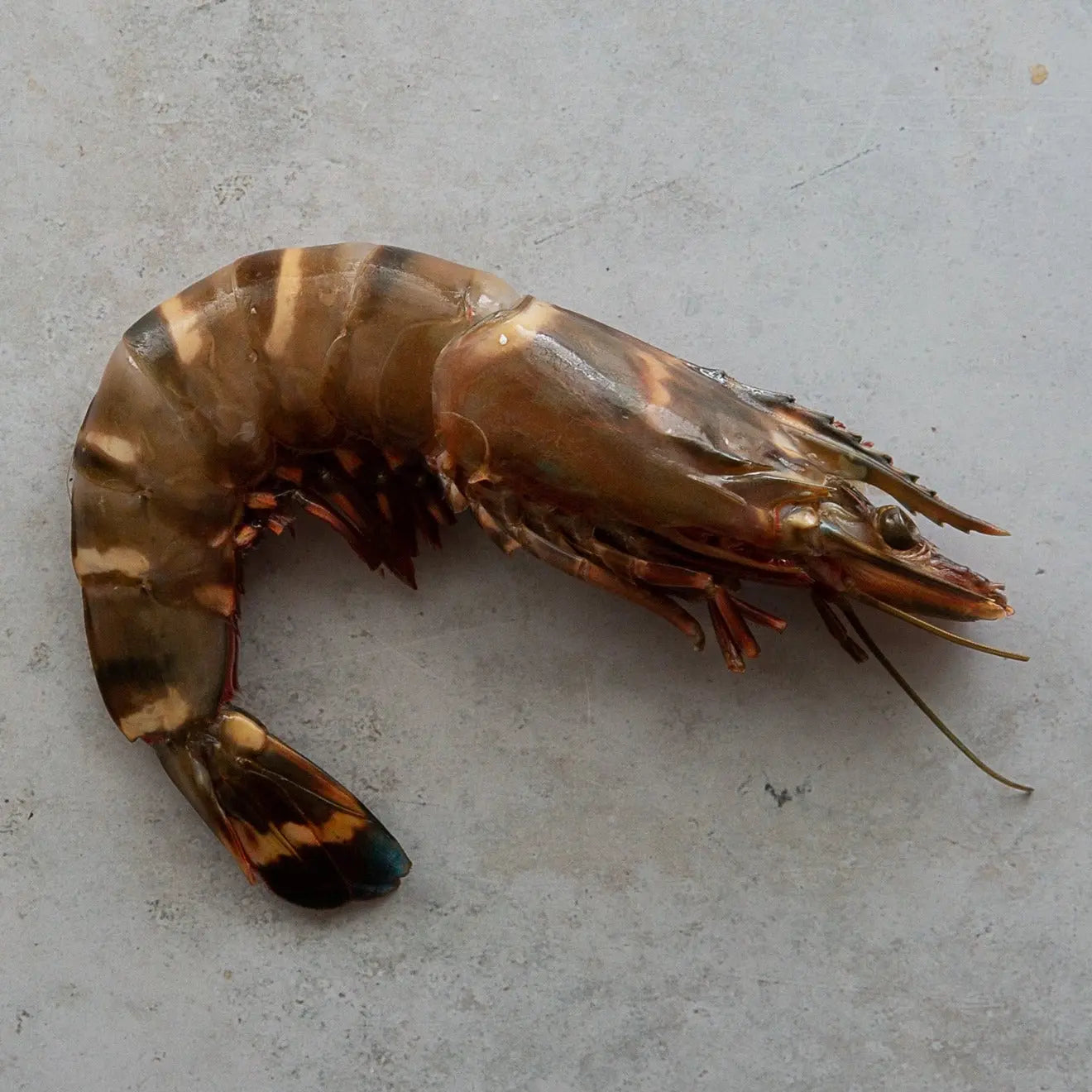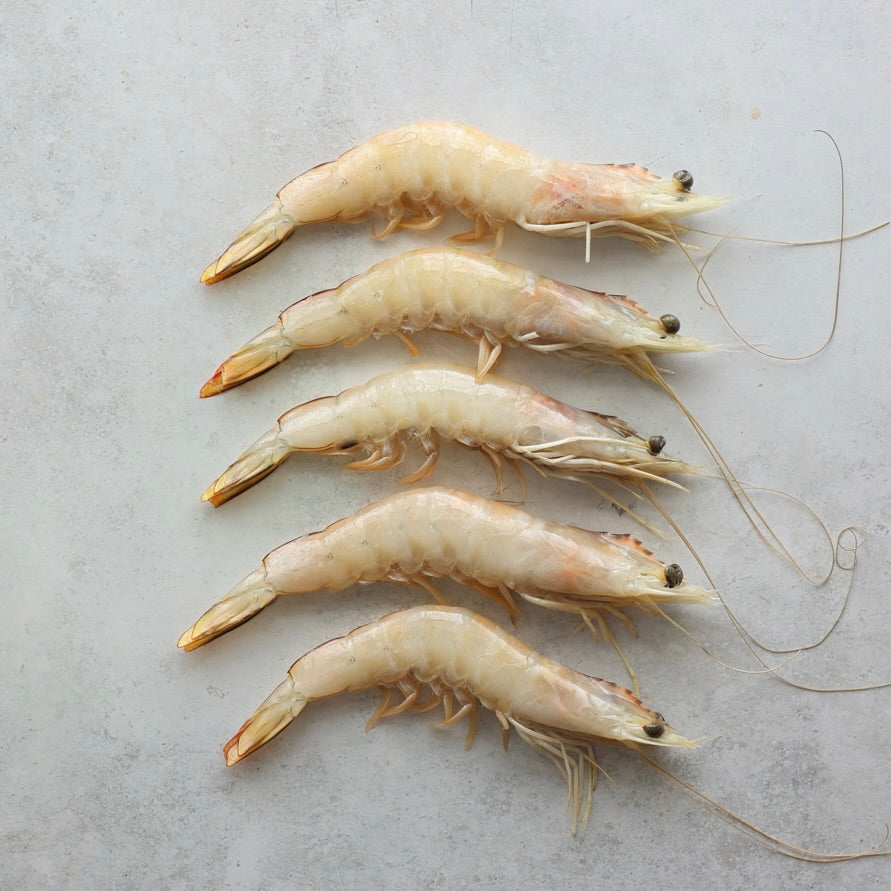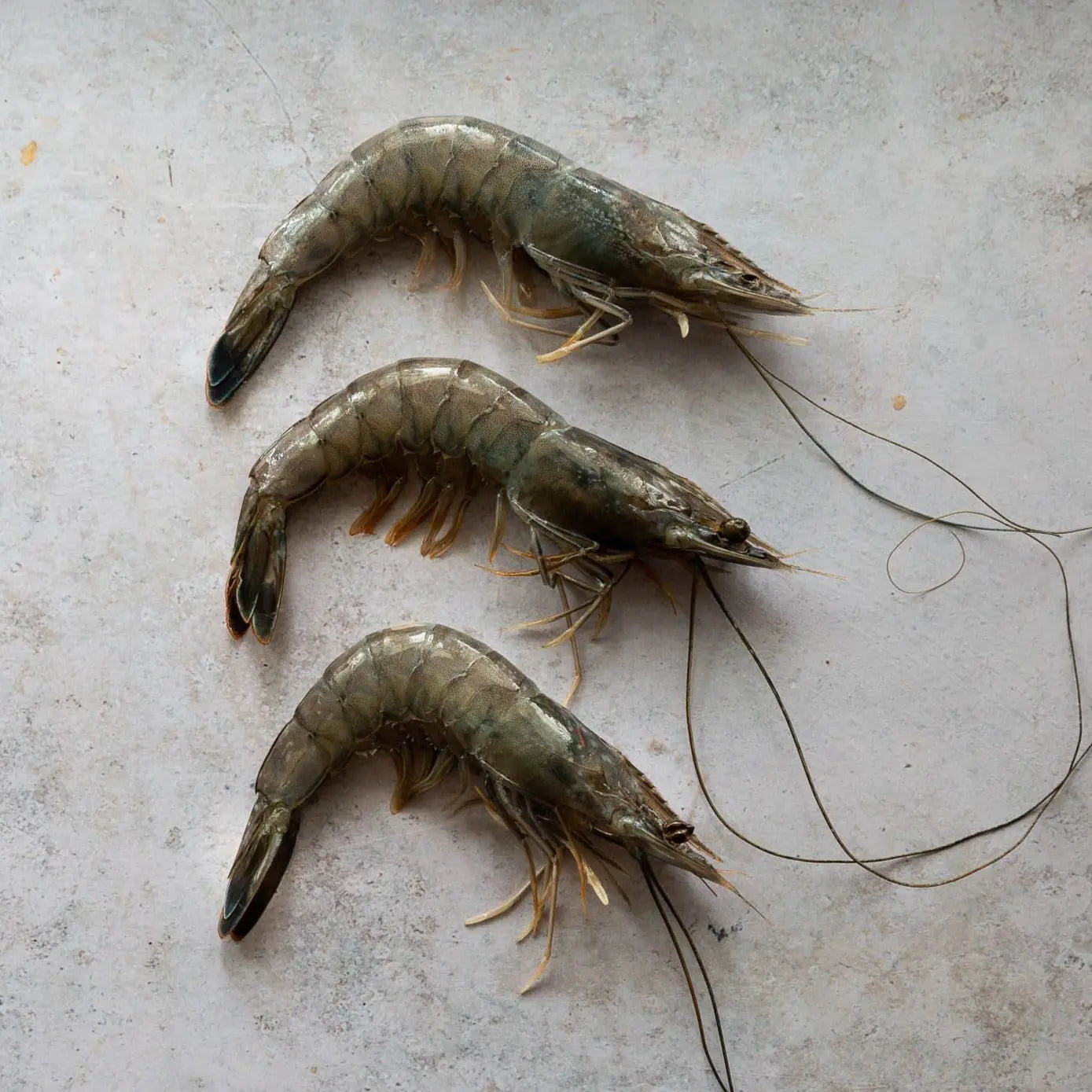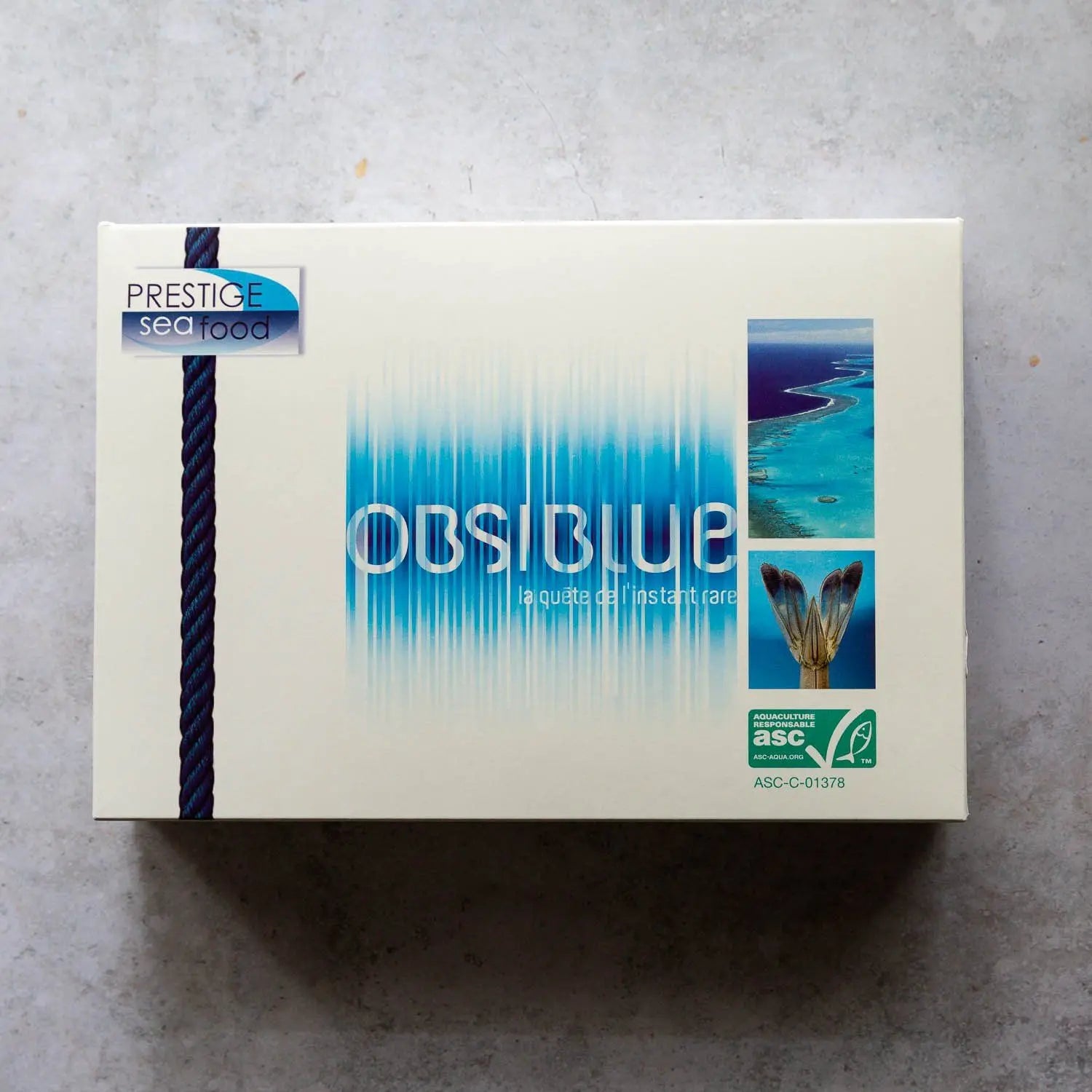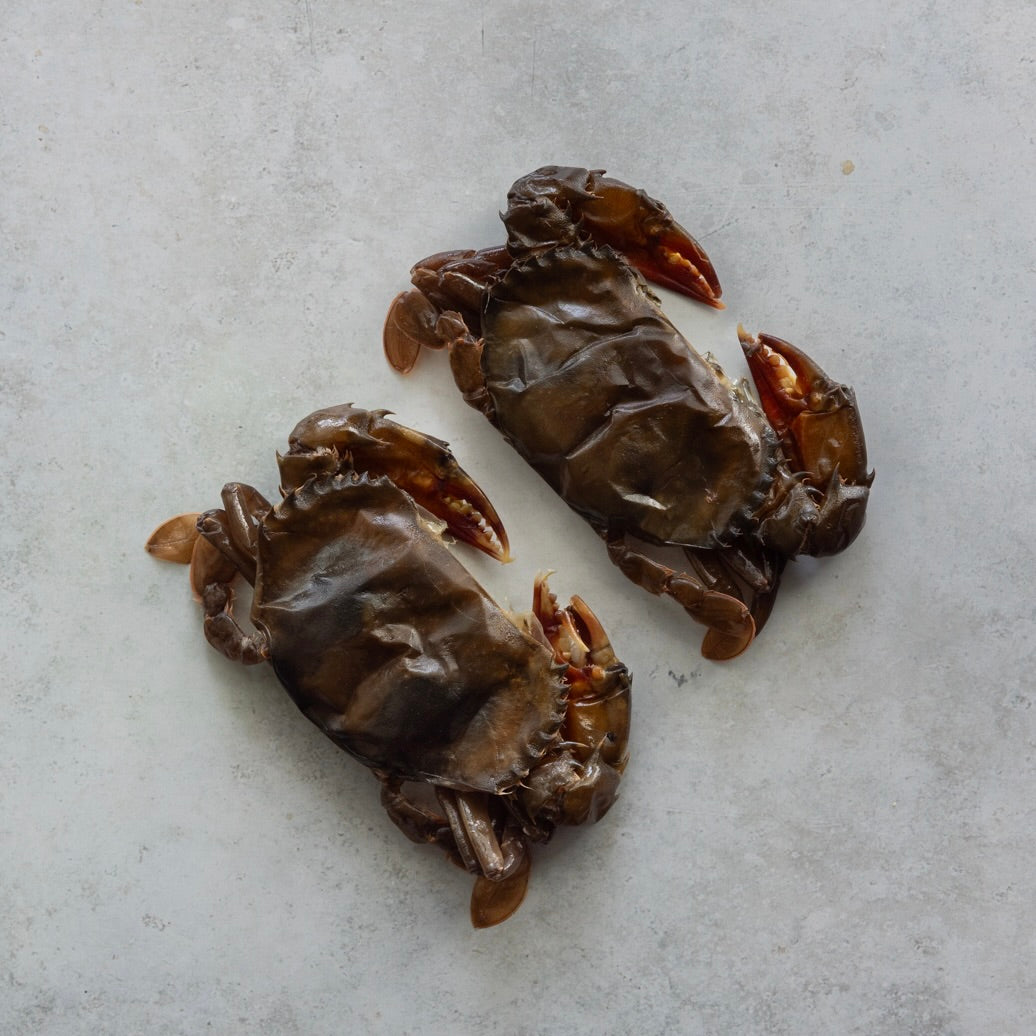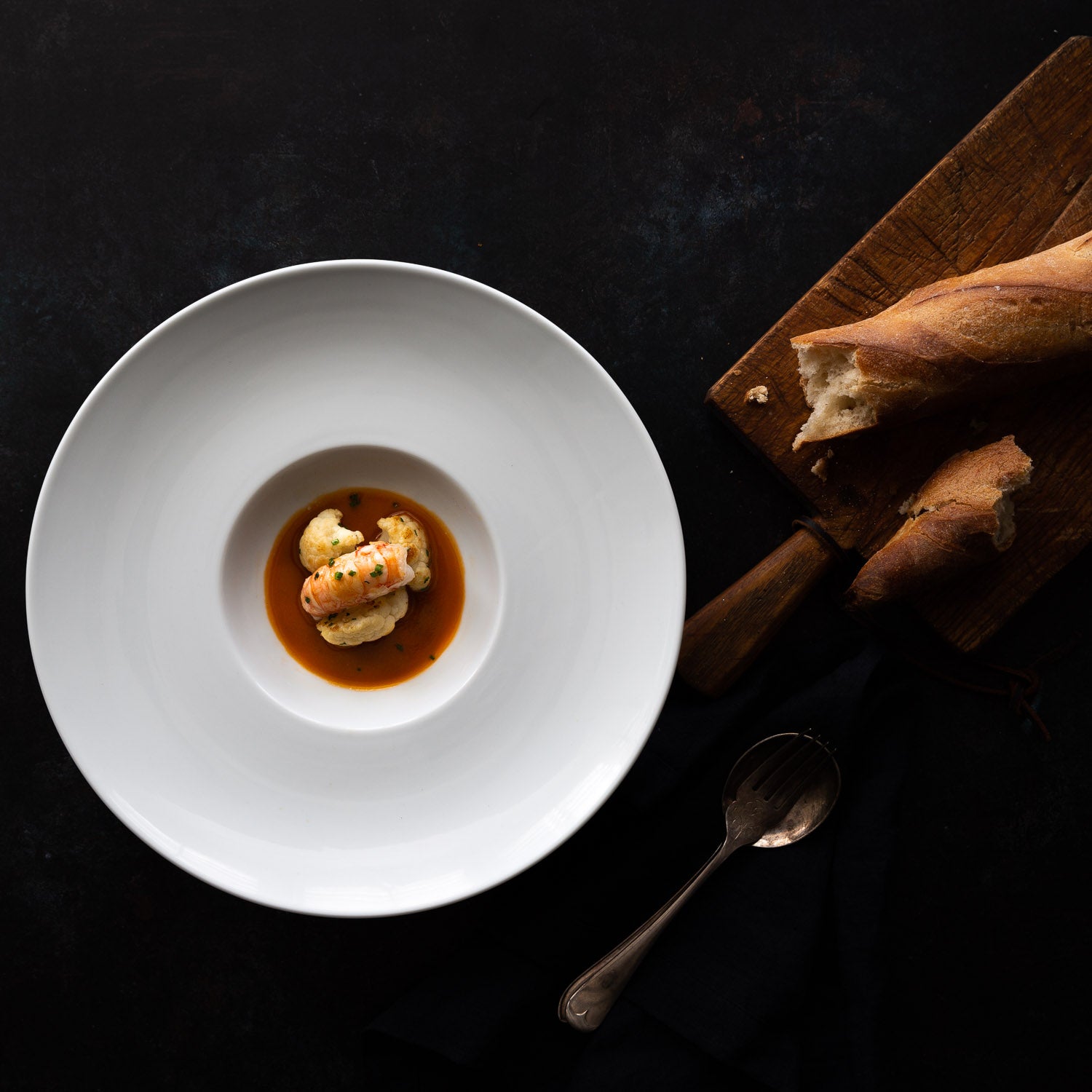
LANGOUSTINE BISQUE
Servings: 4 as a Starter Prep Time: 30 Mins Cook Time: 1 Hour Total Time: 1 Hour 30 Mins
This classic dish can be adapted slightly to differ between a light starter and a more substantial main course. For this light, refined starter we used 1 langoustine per person. This of course can be increased to suit. For a main course we recommend using a hand blender to blitz the whole broth (without the claws) and passing it through a sieve. For a lighter bisque or as a starter, strain the whole broth through a sieve as detailed in the recipe.
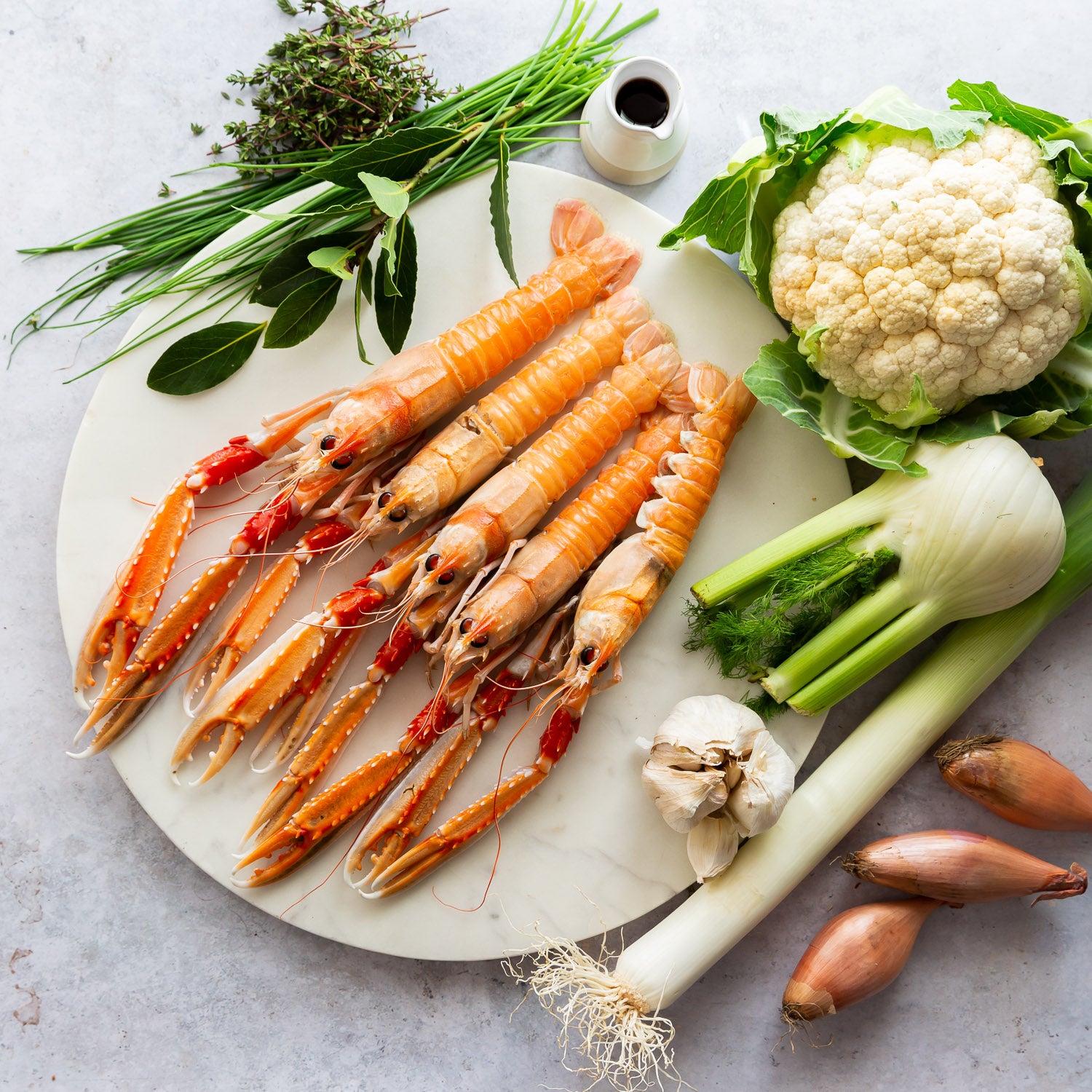
INGREDIENTS
- 1 Onion
- 1/2 a Medium Leek
- 1 Small Fennel Bulb
- 2 Cloves of Garlic
- 2 Sticks of Celery
- 4 Large Wild Langoustines
- 1 Tbsp Tomato Purée
- 1/2 a Small Head of Cauliflower
- 50ml Brandy
- 175ml Vermouth
- 1 ltr Fish Stock
- Splash of Double Cream
- 1 large knob of butter
- 1/2 a Lemon
- A Few Sprigs of Thyme
- Small handful of chives
- 1 Bay Leaf
- Olive Oil
- Salt & Pepper
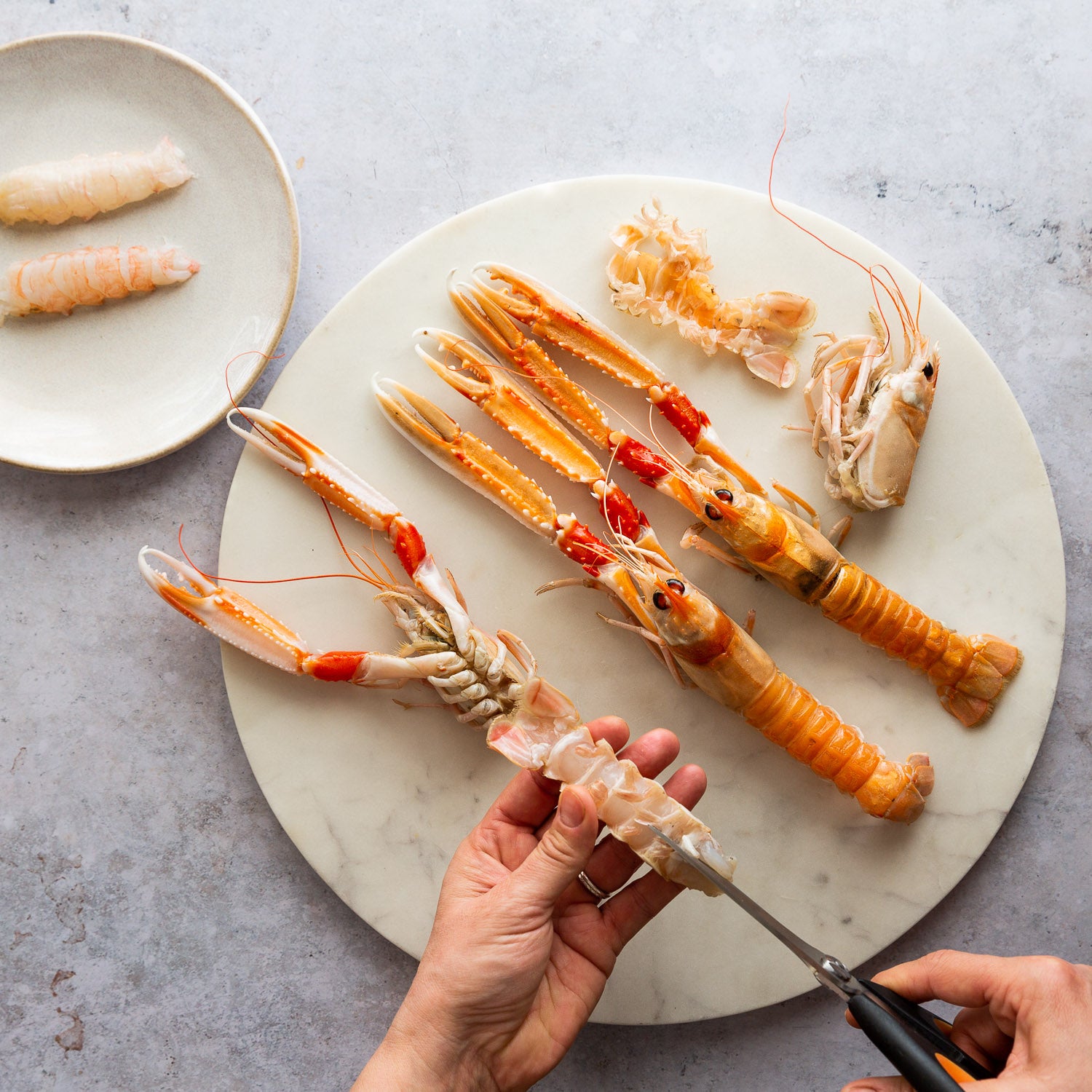
STEP ONE
Prepare the langoustines. With the body in one hand and the head in the other, gently twist the heads off and set aside. Using sharp kitchen scissors, turn the langoustines onto their backs and cut through the joints on the shell segments from head to tail. Splay open the shell. Holding the flesh of the tail in one hand, pinch the tip of the tail shell between forefinger and thumb in the other and gently pull to remove the shell. The intestinal tract should pull out at the same time. Once you have removed all of the shells, place the tails on a plate in the fridge until later. Cut the heads in half and remove the sand sack, giving them a little rinse if necessary, and set aside with the rest of the shells.
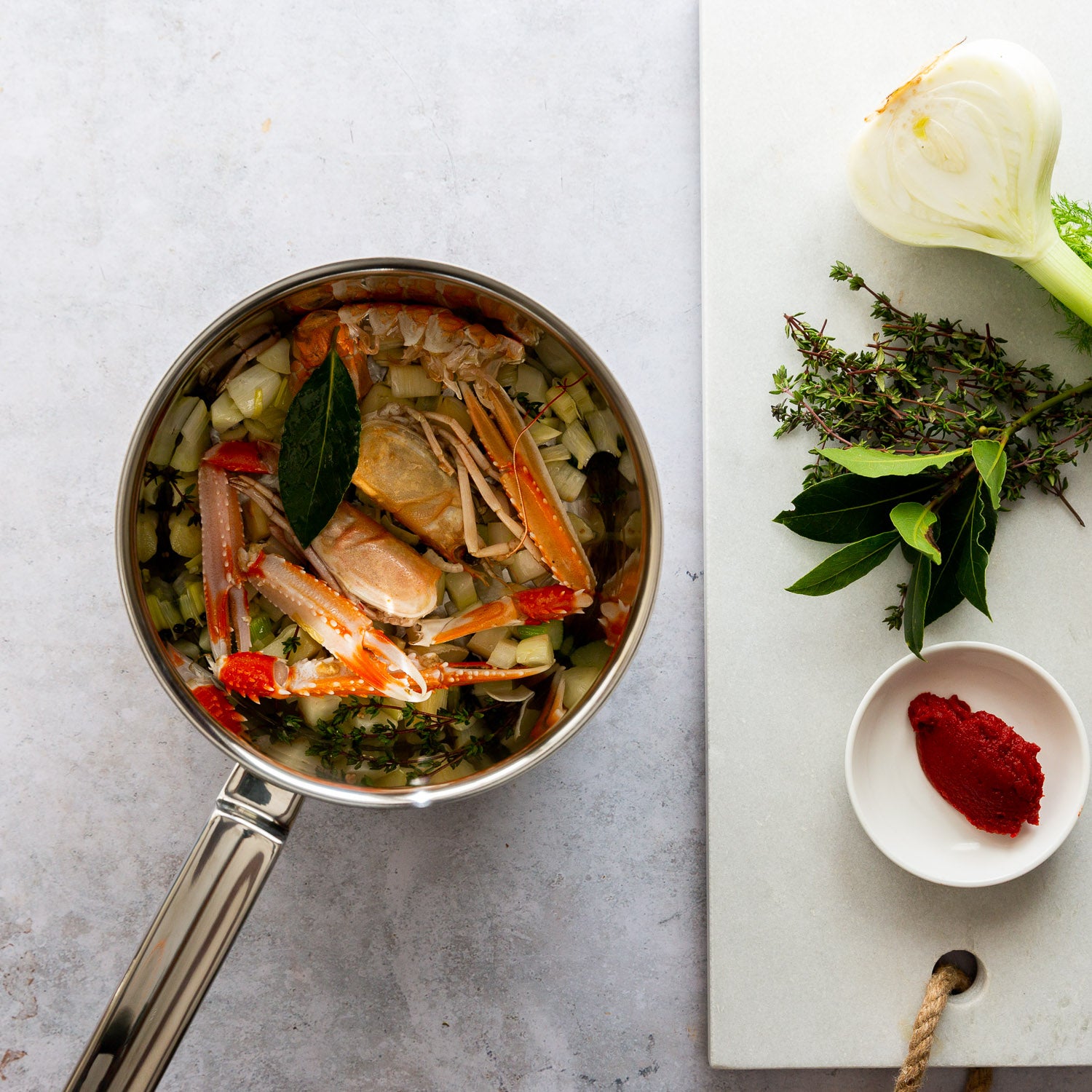
STEP TWO
Roughly chop the onion, garlic, fennel, leek and celery, and sweat down in a large heavy-based pot with a good splash of olive oil and seasoning, thyme and bay.
Once your soup base has begun to soften and is slightly beginning to colour, throw in the shells and cook out for around 10 minutes, stirring occasionally.
Stir in the tomato purée and cook out for a few minutes. Turn up the heat and add the brandy and cook until it has evaporated completely. Then add the vermouth and reduce by half.
Add the fish stock, bring to the boil and reduce to simmer. Using a ladle skim the foam off the top and discard. Simmer for 45 minutes to 1 hour, repeating the skimming periodically if needed. This removes any impurities that rise to the top during the cooking process.
STEP THREE
Cut the cauliflower into small florets and boil for 3-4 minutes or until just soft. Place into a bowl of ice water to stop them cooking any further. Strain and set aside.
STEP FOUR
Once the broth is ready, pass it through a sieve into a saucepan. Using the back of the ladle to squeeze all the liquid through and return to the heat. Add the cream. Bring to a rolling boil and reduce down until a good viscosity is achieved. For this refined starter we reduced the bisque right down to be the consistency of double cream, creating an intense almost sauce like bisque. If following this method it is worth mentioning that this bisque sauce could also be used stirred through pasta or as a sauce for langoustine ravioli. Should a more rustic, hearty dish be desired, simply blitz the broth with a hand blender (claws removed first), and then pass through a sieve and reduce if necessary. Stir in a knob of butter, add a squeeze of lemon and check the seasoning to finish.
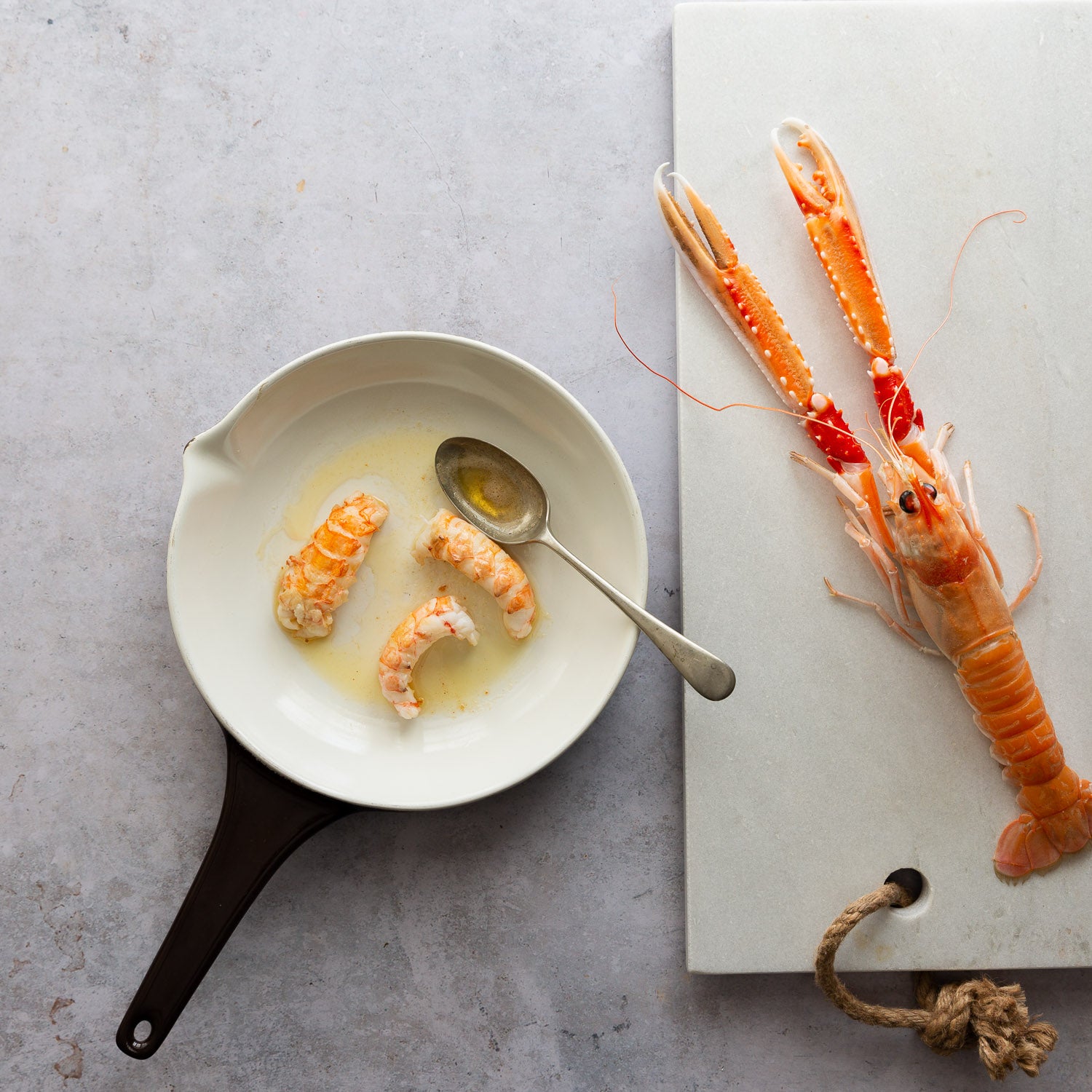
STEP FIVE
In a frying pan, heat some olive oil and lightly fry the cauliflower, season and add chopped chives.
STEP SIX
In a heavy-based frying pan heat some olive oil and a knob of butter on a medium heat, season and gently fry the langoustine tails for a few minutes until cooked. Add a squeeze of lemon and chopped chives. Langoustines are delicate so it is important not to cook them on too high a heat, or to aggravate the pan too much whilst cooking.
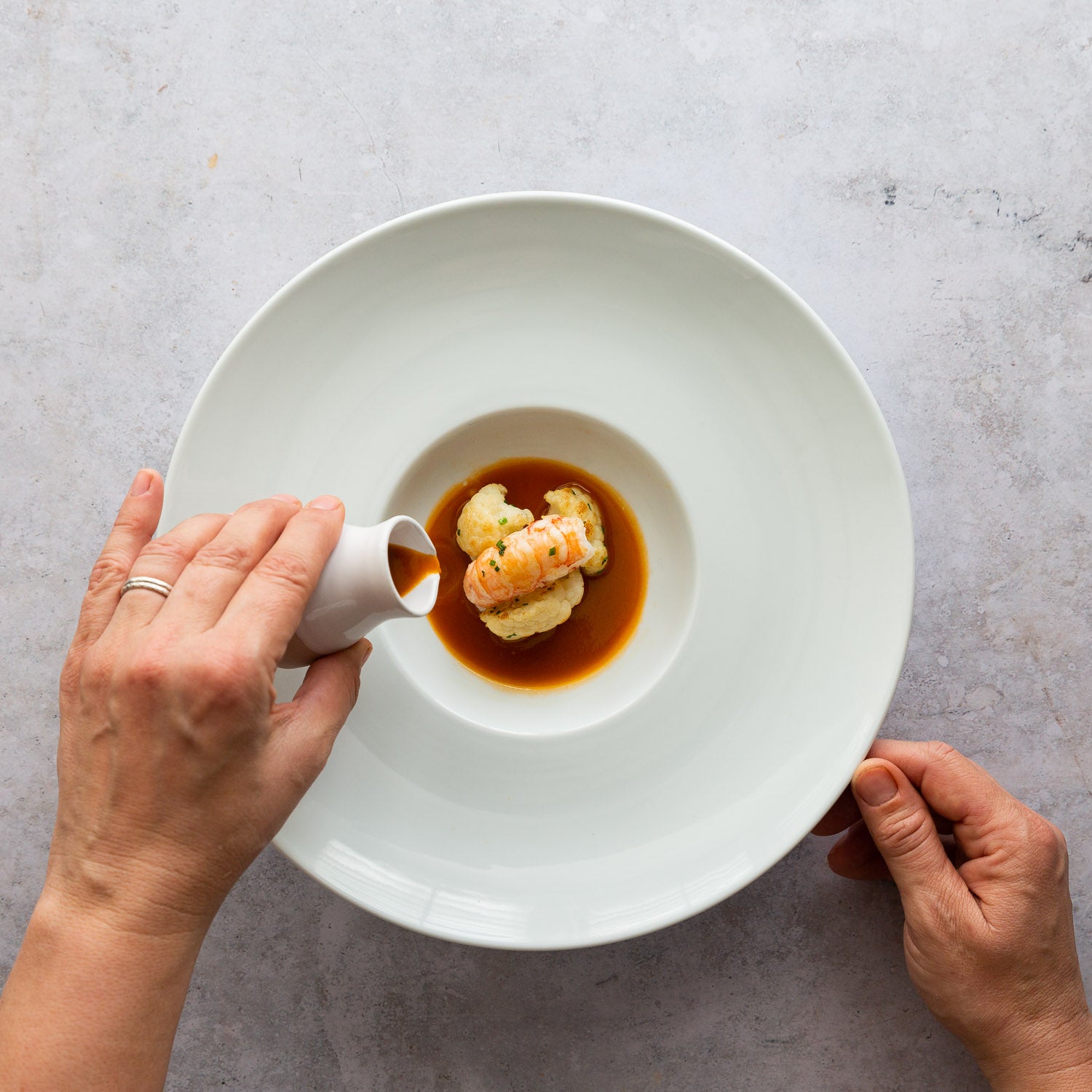
TO SERVE
Arrange a few cauliflower florets in the base of 4 warmed bowls and place the langoustine tails on top. Pour the bisque in the side of each bowl and serve with warm crusty bread.


